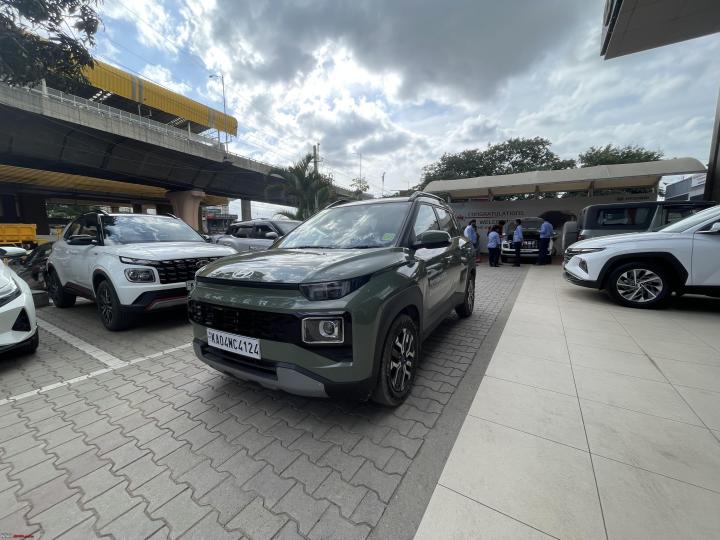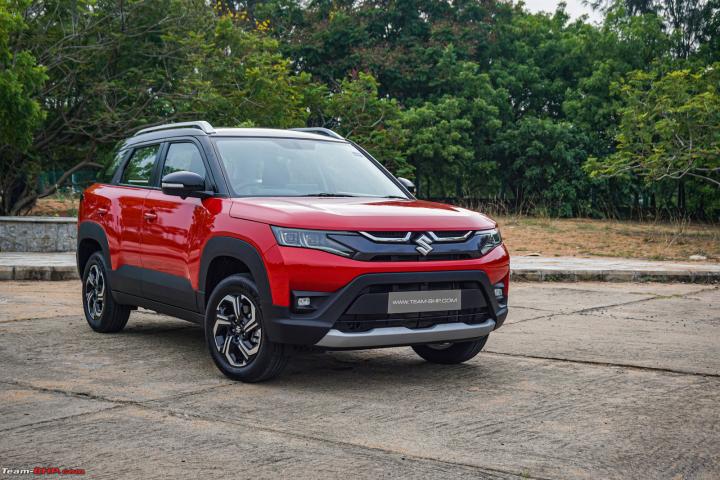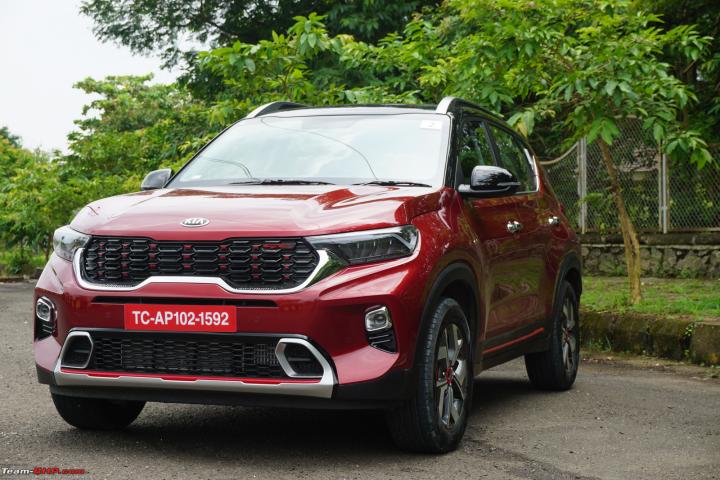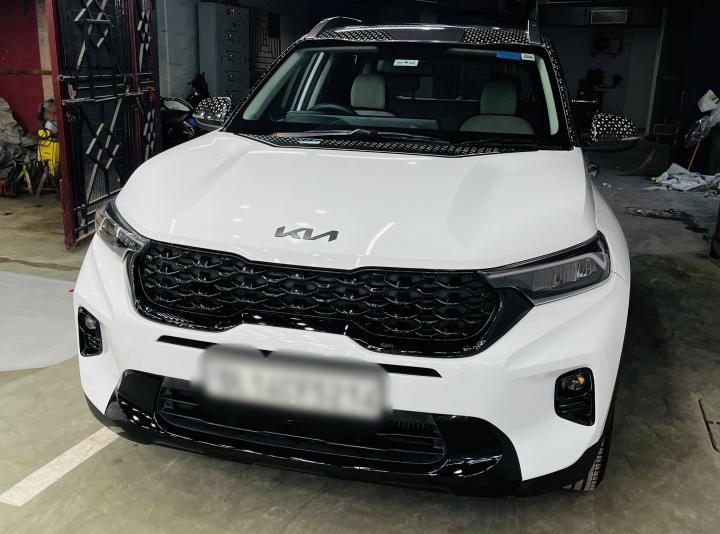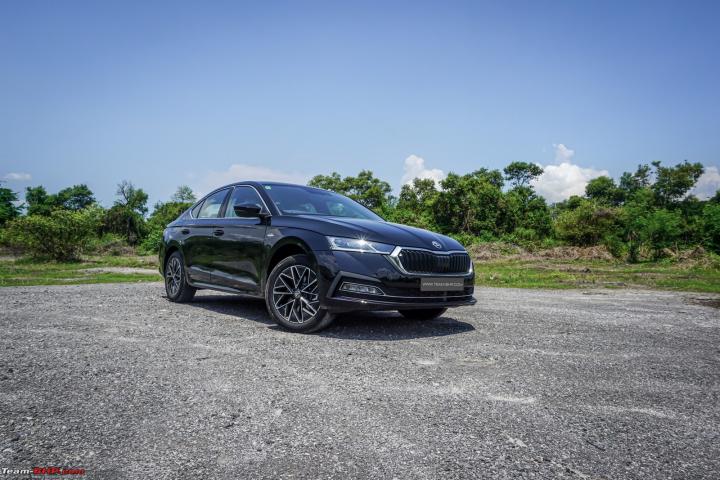News
Frustrating ordeal with my Renault Kiger: 3 breakdowns in 8 months
The car broke down in the first fortnight of purchase.
Shreas Rajadhyaksha recently shared this with other enthusiasts.
We purchased a Renault Kiger dual-tone RXZ top-end variant in August 2022 from Renault Fatimanagar, Unnati Vehicles, Pune. The car broke down in the first fortnight of purchase and below is point by point detail of the events that occurred:
- The car broke down as there was an oil leakage near the gearbox side. They mentioned this was due to a pipe sliding out and therefore the leakage.
- This happened at a distance less than 5 km from the service centre, but Renault RSA was so horrible that the towing van took four hours to reach the spot.
- We took it up with Renault management and insisted that we wanted our money back or a car replacement to the vehicle since the car had broken down in such a short span of taking the vehicle.
- Renault after sales team pitched in and along with senior technical members from Chennai, they assured that the car was perfectly ok and that the oil leakage was a one-off incident.
- Renault management offered us an extended warranty and extended service and unlimited accessories.
- While we were completely adamant to accept this, they insisted we take it as goodwill and trust their word that the car was perfectly ok and there would be no further instances of the car breaking down.
- After much strenuous discussion, we agreed and decided to trust their word. We took the car home that day since our toddler son was at home alone and we had to rush back.
- Next day, we received an email from the Renault service centre stating extended warranty and extended service would be given. However, accessories worth only Rs 15,000 would be given. This was a blatant lie from their executive Mr Kunal Muni who was very arrogant and denied making any such commitments (we have all on record these discussions).
- After much ado, their service centre head agreed on accessories worth Rs 50,000 and extended warranty service.
- The vehicle ran well for a couple of months but kept giving heating issues, AC cooling problems etc. on the go.
- When we approached Renault, they said that since the vehicle is turbocharged, these problems will always exist.
- Cut to April 2023, we had gone to a nearby resort in Pune. While on our way back, the car refused to start.
- We called the service centre guys who arranged for an alternate vehicle and towing van.
- After keeping the vehicle for 4 days, they found the fuel pump was damaged. Imagine the pump getting damaged in six months of car
- manufacture.
- They replaced the fuel pump as a part of the car warranty and drove the car for 50 km approximately (that is what they mentioned to us at least).
- After using our fuel to test the car, they never compensated the cost of this fuel. Nevertheless, they found the car to be in top condition for usage once again.
- 8 days later, my family and I were returning from a friend's place at midnight and the car broke down on the highway at 1 AM.
- Upon checking by service centre guys, it was found that the fuel pump was again the problem. The couplers this time were loosely fitted and therefore the car stopped working, all this in just 7 days of previous repair!
- The car currently is again giving problems in pickup and AC cooling. If we switch on the AC, the car just refuses to pick up and there is always a fear instilled in us that it may break down at any time.
- We are insisting that Renault give our money back since this car is certainly a terrible product and our life is at stake due to this product.
- Renault however has been using its after-sales team to fool us into believing the car is completely OK and we should not worry. Three breakdowns in eight months, this result speaks for itself.


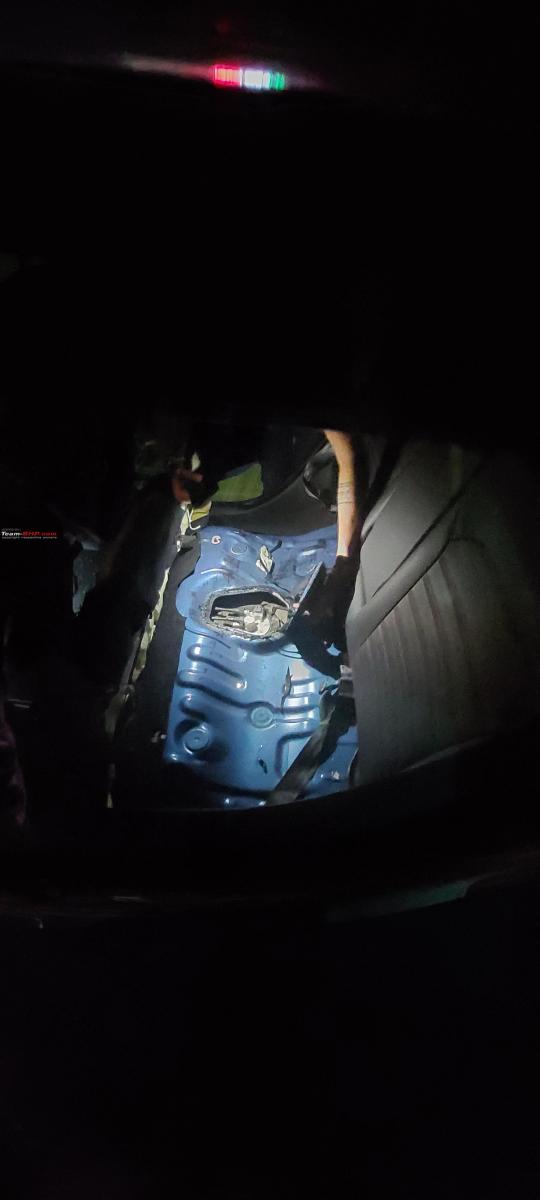


Vehicle history:






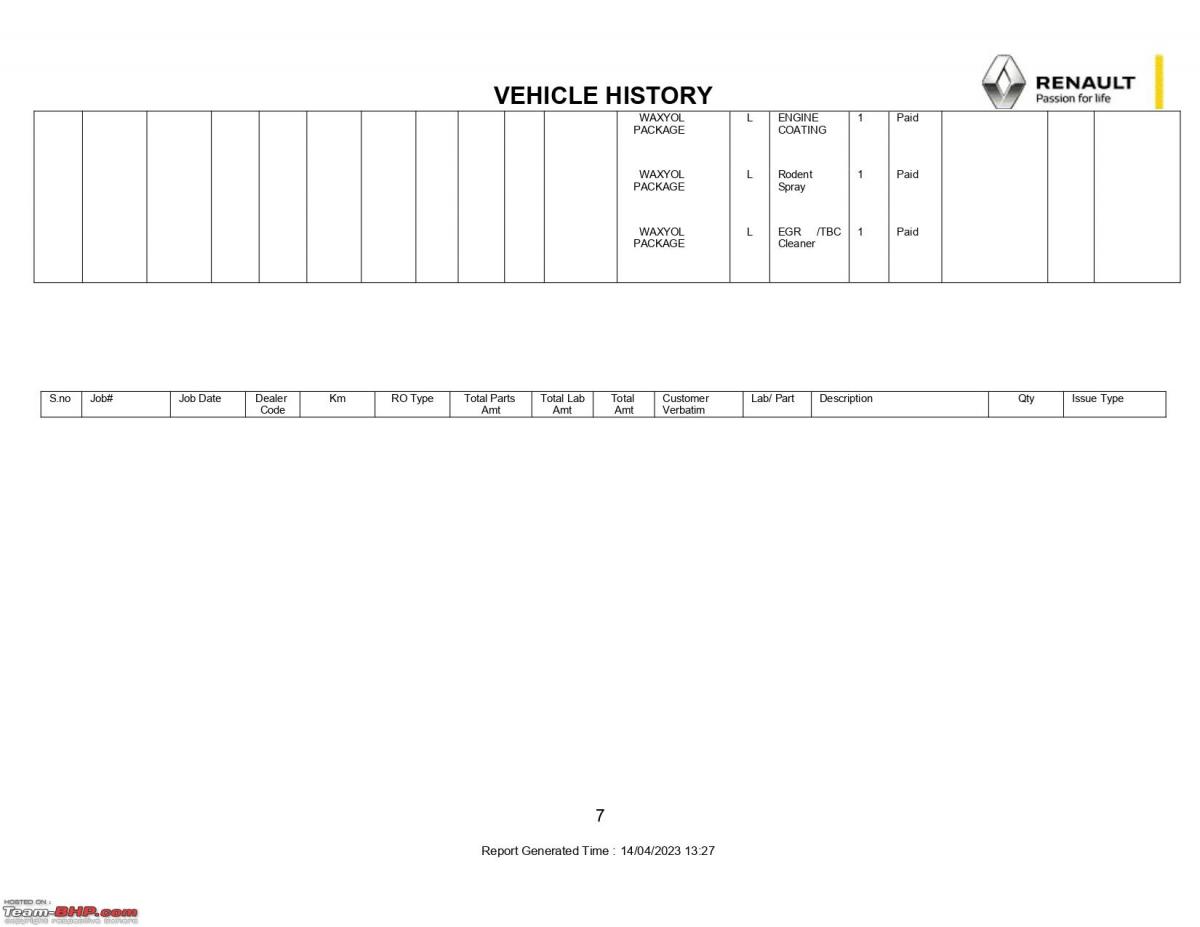
Check out BHPian comments for more insights and information.
- Tags:
- Indian
- Renault Kiger
- Petrol
- Compact SUV
News
10 months & 5000 kms with my Maruti S-Presso AMT: Observations so far
As we all know Maruti after sales is fuss free. Two services are done and have been quick.
BHPian FiatDiesel recently shared this with other enthusiasts.
It has been 5000 Kms and 10 months of ownership of our S-Presso Vxi (O) + AGS. It was purchased primarily for my wife (new driver) and also for city duties. Our experience has been good with key benefit been car’s small footprint, all bells and whistles in terms of features & accessories and its upright high seating position which immensely helped my wife to become a confident driver.
During selection she loved the looks of Ignis however between Spresso and Ignis, she was comfortable driving Spresso given the height and upright seating it offered and she could see bonnet for better judgement being new driver. It was also super compact from outside while spacious from inside (myself and son are 5’11”+) however it’s ride was on firmer side. Since it’s meant to be for short rides in city, we were ok.
We opted for top model with AMT which came with Hill hold, ABS, Air bags, Apple / Android car play, steering mounted controls etc.
This was last year in October, we got it through Ackodrive approx 6.55 OTR in Pune.
Her daily commute is 12-15 Kms in bumper to bumper city traffic and due to its super compact size, she is very comfortable driving the car. Mileage is 15 kmpl tank to tank in city. We never took her to highway.
We have driven it for 5000 kms approximately till now, key points are:
- Super easy to drive in traffic, it’s small footprint and AMT helps. It’s biggest plus.
- No issues with AMT as of today.
- As we all know Maruti after sales is fuss free. Two services are done and have been quick.
- Ride is on the firmer side however not major irritant. Tyre change will help once existing one worn out.
- It’s pocket rocket. I have done peddle to metal in it once, it shoots. However it’s not meant for it but this nature of engine gives ability to be a quick city runabout vehicle.
- It doesn’t have front central armrest which we miss, however lot of options available in non OEM accessories.
- Rear glass wiper is sorely missed specially during rains.
Posting few pics, we got couple of accessories including alloy wheels etc



Check out BHPian comments for more insights and information.
News
Test drove the Hyundai Exter: Here's why I feel it is worth buying
There is highly adequate low end grunt and one doesn’t feel out of breath even at the upper end.
BHPian shankar.balan recently shared this with other enthusiasts.
I took an hour from my day today to go nearby and see the Hyundai Exter.
I shall just focus on my own workman-like impressions of this vehicle, purely as a normal, no-frills, lay-person consumer. I have honestly NOT yet read the official review and I have barely participated in this thread. And the last Hyundai we had, was my Dad’s 2014 Hyundai I20 Asta manual Petrol.
Saying all this, right from the moment they published the teasers and ads of the Exter and the brochures online, I have been quite attracted to this little vehicle as an option that may be considered for my Dad, as a replacement to his 2019 Toyota Glanza. Hence I ve been very keen to see and drive this Exter for some time now. I have said earlier that I like its looks. Today I was able to reaffirm that liking. It is indeed a chunky and good looking design.
Today, I got that chance I wanted. I had a very pleasant experience at the Exter showroom, because there was only one small family there and two other people looking at various cars. (I also saw their new Verna and it certainly does look very aggressive and handsome.)
It is a pleasant experience when there is no unnecessary hype and hoopla. And when clear information and display vehicles and test drive vehicles are made available easily so as to ensure the paying public remain engaged with the brand, in a new launch.
The Exter closely resembles its older brothers, the Venue and Creta. However, it is just a little shorter than the Venue when viewed from the side. I am very appreciative at the space engineering inside and external appearance that these new Hyundais have! The display car is the MT Top Spec single tone. The test drive car was the AMT Top Spec single tone. Both were in this rather lovely shade of khaki/ green which incidentally looks quite close in shade and tone, to my Rocky Beige Thar. (Being faintly militaristic in nature, this colour is amongst my personal favourites).
I am not going to compare the Exter with the Tata Punch and Nexon and Citroen C3. I am just going to share my own impressions of it.
I sat in the rear left passenger seat with the front passenger seat pushed back to my own seating position and despite being a big built person of 6.2 height I found the rear seat perfectly comfortable. Yes even the under-thigh support was acceptable as was the leg room. I think it is to do with the rake angle of the seat cushion squab. There was adequate lumbar support too. The adjustable head rests give me an essential support at the base of the back of my neck which allows for a certain comfort in the neck-rest aspect.
While I would normally never sit as a rear passenger in any car, excepting if it is a Taxi, I believe that I will be able to sit comfortably in this Exter as a rear passenger and go from Bangalore to Mysore.
The driver’s seat is height adjustable so I brought it to its lowest point and adjusted the back rest for my driving position. It was nice to sit in and offered very good visibility all around. Here when first seated, there was an impression of under-thigh support being a little less. But once I adjusted the seat and started driving, I found I was quite comfortable indeed. No problem even despite my height. There has been talk about the integrated and non-adjustable front head rests, but I actually am not grumbling about these. They are perfectly adequate as per my impression. Ingress and egress in all the seats is perfectly comfortable and the seating and driving position is also very good. Head room, leg room and foot room are fine across all the 4 seats. (I cannot think of all these cars as being anything more than 4 seaters.) withbthe driving position, one won’t miss seeing the potholes while driving. Yes it isn’t quite like the Thar which feels like you’re looking out of the first floor balcony; it is more like the Jimny in this aspect and it is perfectly handy for our driving and operating conditions.
The sharply raked windscreen gave me an excellent line of sight to everything around me. I did not feel the A Pillar Blindness the way it is there in my Thar. Yet, though it isn’t as unobtrusive as the A Pillar of the Jimny, the angle at which it is raked, easily compensates!
I liked the steering wheel a lot. It felt nice and chunky to hold. Feels substantial. The instrument panel and the cluster of digital information and gauges are easy to read and provides all the necessary info. The music system sounded reasonable but that is not my real area of interest in a car. Being broad daylight I did not bother with the lights. The horn however is very weak and I think one of the first things anyone will tend to do especially in India, is to change that. The indicator stalks and all are decently built and the indicator click click sound is of a ‘softened intensity’ which feels and sounds quite nice. Quite premium in fact.
The plastics in this car are of the hard grey black variety and I guess that is to be expected considering the price it is being offered at. I am very happy about the 6 Airbags that it comes with and of course the other safety features that it offers, along with a few of the other gizmos. Unlike the maps in my Thar, this Exter’s maps seem to be perfectly well synchronised and calibrated. And for all those grumbling about the Jimny and its lack of bottle storage space and general storage space, they will be quite happy with the little Exter. It has some pretty decent cubbies for all manner of odds and ends and yes, the bottle storage is perfectly adequate across all 4 doors. There are a nice couple of charge ports and a wireless charger mat as well which is a good thing.
The OEM dash cam feels a bit plasticky to the touch but will do the job in providing that essential recorded footage. The reversing camera’s quality is surprisingly good and offers a very decent definition of visual.
The manually operated cover for the sun roof allows for some level of ‘feel’ of more light and lightness on a long drive. However the quality of the glass itself felt a little less-than-solid to the touch. The doors and all open and shut with a decent enough thunk.
The boot space is nice and roomy. Coming from a Thar I guess I am bound to feel that way but it is actually quite useable being a well designed high-set large-hatch. The rear seat does not have split folding. But once the whole thing is folded, it becomes a large and capacious luggage carrier space.
I took the car for a test drive - the AMT version. And we drove it for about 6-7 kms, on the slip roads on the Hosur Road and on some back roads too. We also drove it for about a Km on a rutted, undulating, uneven, unpaved mud-track nearby.
I have never driven any of the Hyundai AMTs before, and I have come away very impressed indeed. It has the normal Auto and the Manual mode. In Auto it holds lower gears till about 1600-1800 rpm and then up shifts. There is a mild slingshot effect felt. If one slows down to near dead halt to negotiate a badly designed hump, and then after crossing the said hump, if one accelerates smoothly, one finds the lower gear being held till the above rpm and then it’s almost like a ‘second wind’ that the car gets, when shifting to a higher gear, hence this above mentioned impression of the slingshot effect.
The AMT is pretty smooth but one feels that kick at 1600-1800 rpm. It does not hunt for gears. It does whine a little but not as much as the Jimny 4 speed TC does and definitely not as much as Dad’s Glanza CVT does.
There is highly adequate low end grunt and one doesn’t feel out of breath even at the upper end. The engine feels nice and smooth and silent. No drama and no unhappy noises and all. It has enough power to overtake, even in Auto mode. The manual mode is responsive and while it will never give the same feeling of instant ‘kick down’ like my Thar TC gives, it is still pretty respectable. The power delivery cannot be as instant or linear as it is in my Petrol Thar, but again, it is perfectly respectable.
The vehicle feels competent in a straight line. It brakes well in a straight line. I did do some level of hard barking as a test and find myself to be satisfied. The ride comfort of this vehicle is very good indeed, the driving seat and all doesn’t ‘hug’ one, but it provides a lot of support. Lumbar support included and it feels snug.
I took a couple of curves a little quickly (60kmph) and did not experience the unexpected. There is as usual some level of roll, but well contained since it is a well sprung monocoque. Even on the above mentioned uneven mud track which I drove on, the vehicle performed very competently indeed. One does not feel the side to side swaying the way one feels in the Thar. Yes the Exter is much lower set but still. It feels comfortable when driven on such roads. It won’t shake you up unutterably. It is more comfy than even the Jimny with its well publicised well-tuned suspension. Its inherent 185mm ground clearance certainly gives a lot of confidence to tackle the typical urban and countryside conditions which we experience in India. Very good suspension tuning in my opinion. The steering is well weighted and not ‘lifeless’ as I have regularly been led to believe that Hyundai steering’s are. The EPS is decent. Light enough for the city. Firm enough for the highway. Turning radius is very comfortable in the city. This vehicle will be good for both city driving and highway trips.
The stock tyres are 175/65/15 JK UX Royale. These do provide very decent cushioning. However, they don’t really fill the wheel arches very well. And it will be the wish of most buyers, to do a small upsize of the tyres to perhaps 195’s. 205’s I believe may be a bit too much to upsize to.
It would also be very nice if the Hyundai folks were to offer a Sport or an N Line version of this Exter with one of their neat little small-yet-grunty Turbo Petrol engines and a nice lightly growly exhaust.
This Exter is temptingly positioned. It is priced well (Rs. 12.31 lacs on road in Bangalore for the top spec AMT single tone version is a fair price in my book, for this vehicle). It comes with this excellent Hyundai Service committment to Indian consumers. It is a very competent and comfortable vehicle with good features and plenty of safety kit especially at the price at which it is offered. It is calculated to appeal to a wide cross-section of small families, young singles and elders. The colour palette is attractive. It is a neat little outdoorsy Smart Activity Vehicle, if one doesn’t want to call it an SUV.
It offers that ‘sense of adventure’ somehow though maybe not quite as much as maybe the Jimny offers. But then, this is a vehicle that will appeal to a far wider audience than the Jimny can ever hope to.
I think it offers fantastic value and is bound to succeed in this market. Hyundai, (with or without SRK’s plug) is to be greatly appreciated for taking our Indian consumers seriously and addressing the market with honest sincerity. No wonder they are a great success in India. They deserve every bit of it my considered opinion.
Will I ask my Dad to change from his Glanza to this Exter? I will definitely ask him to drive it and see if he likes it. If he does like it, then it is a very worthy option to consider.
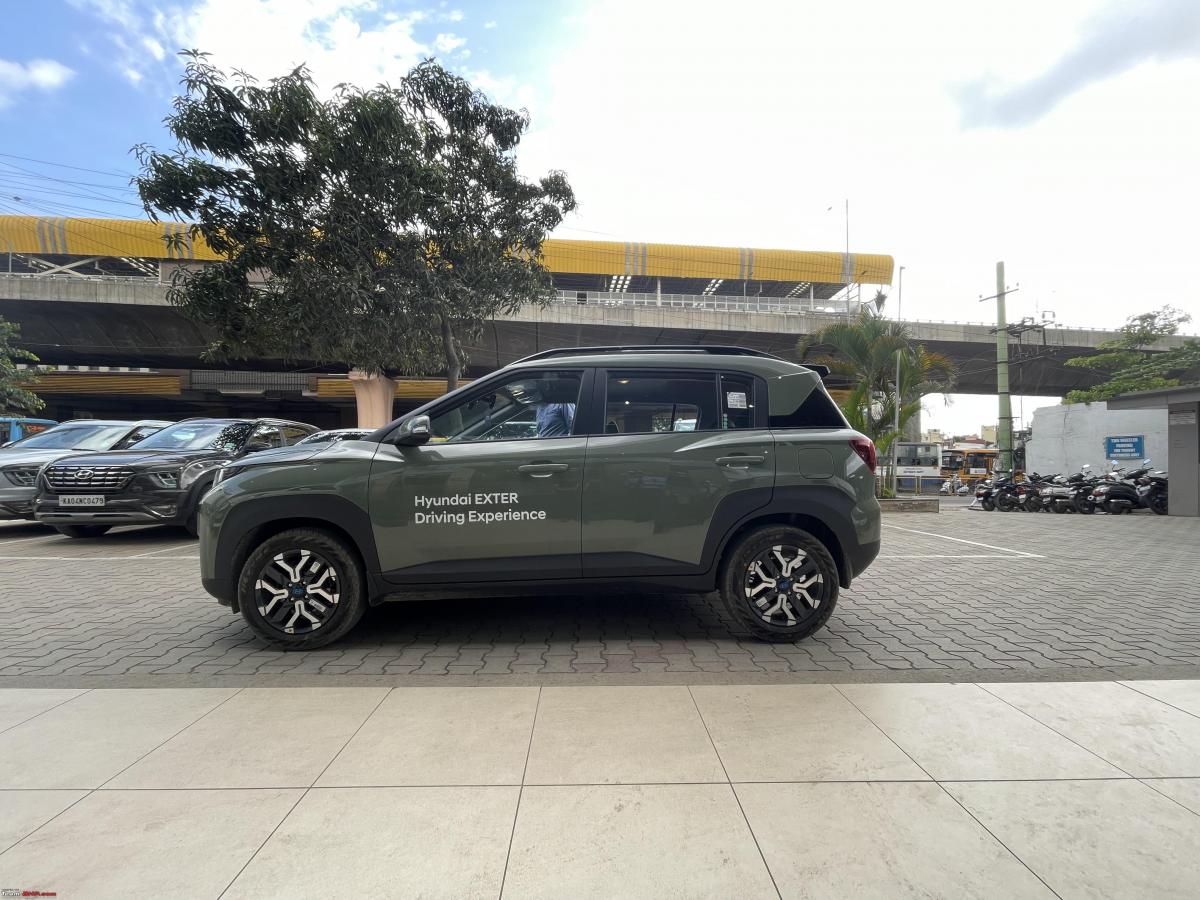

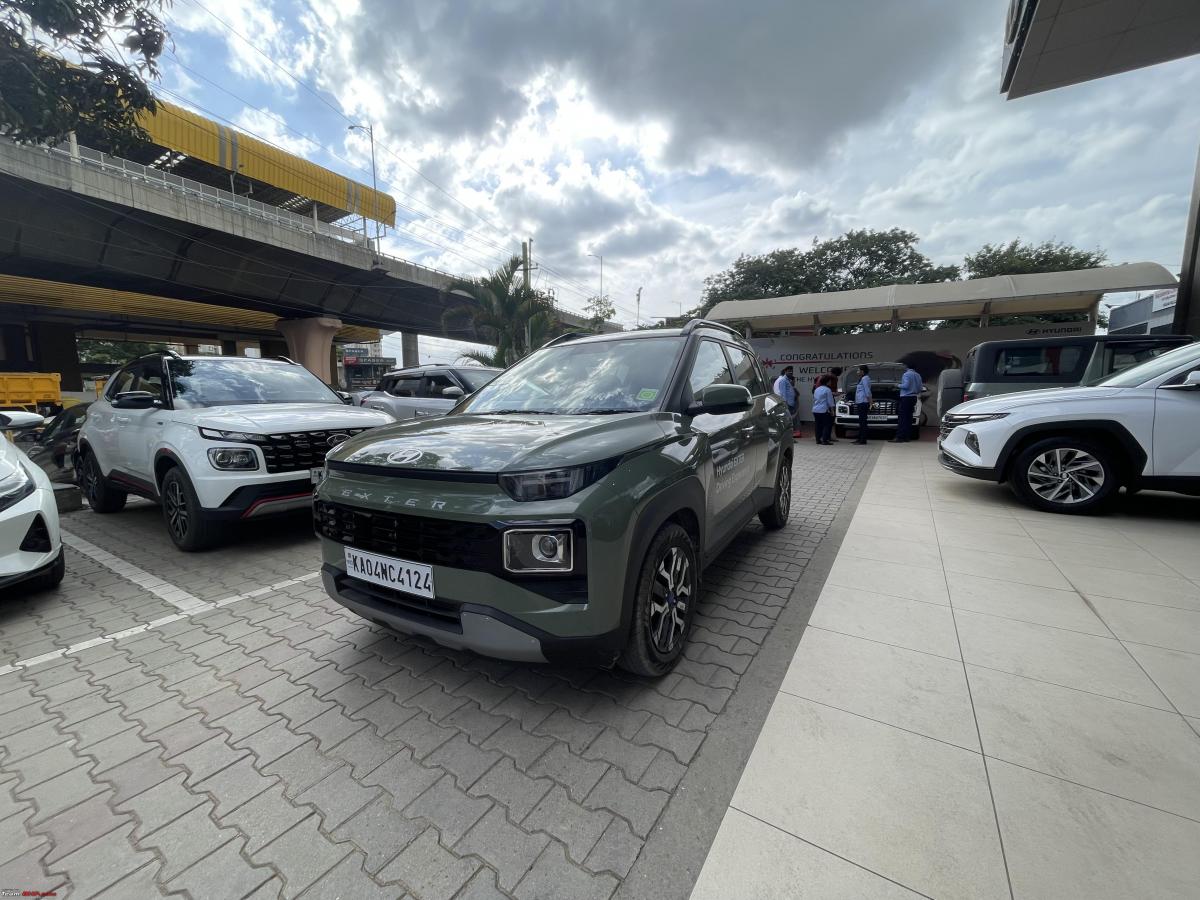
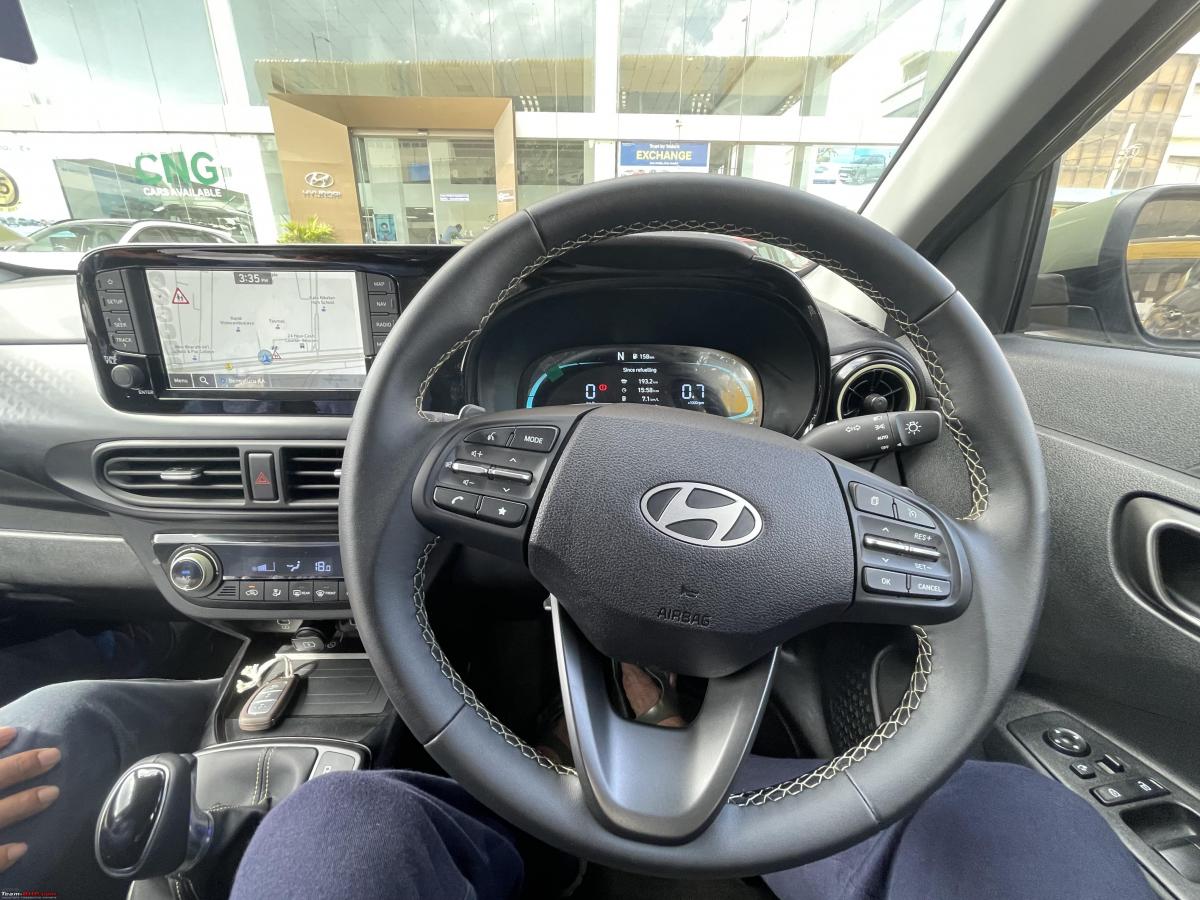

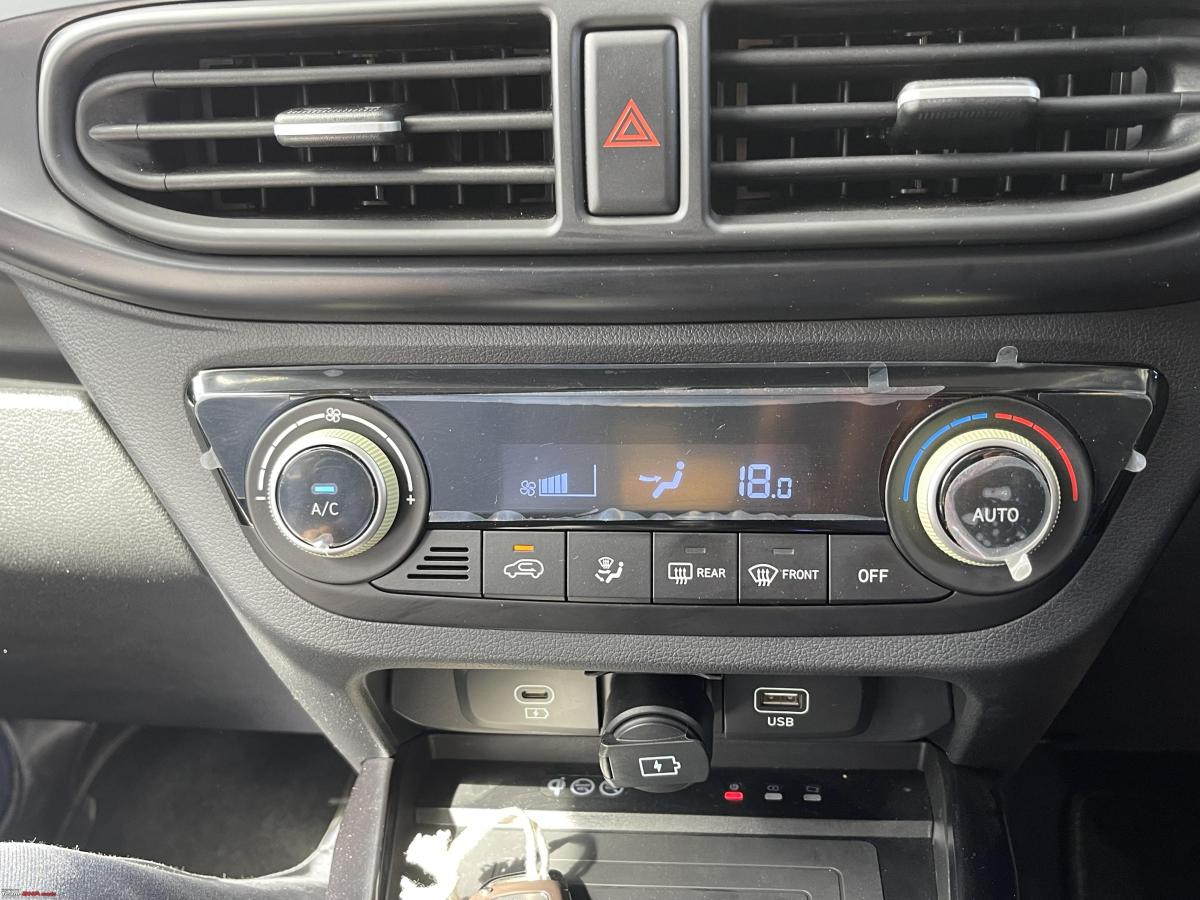
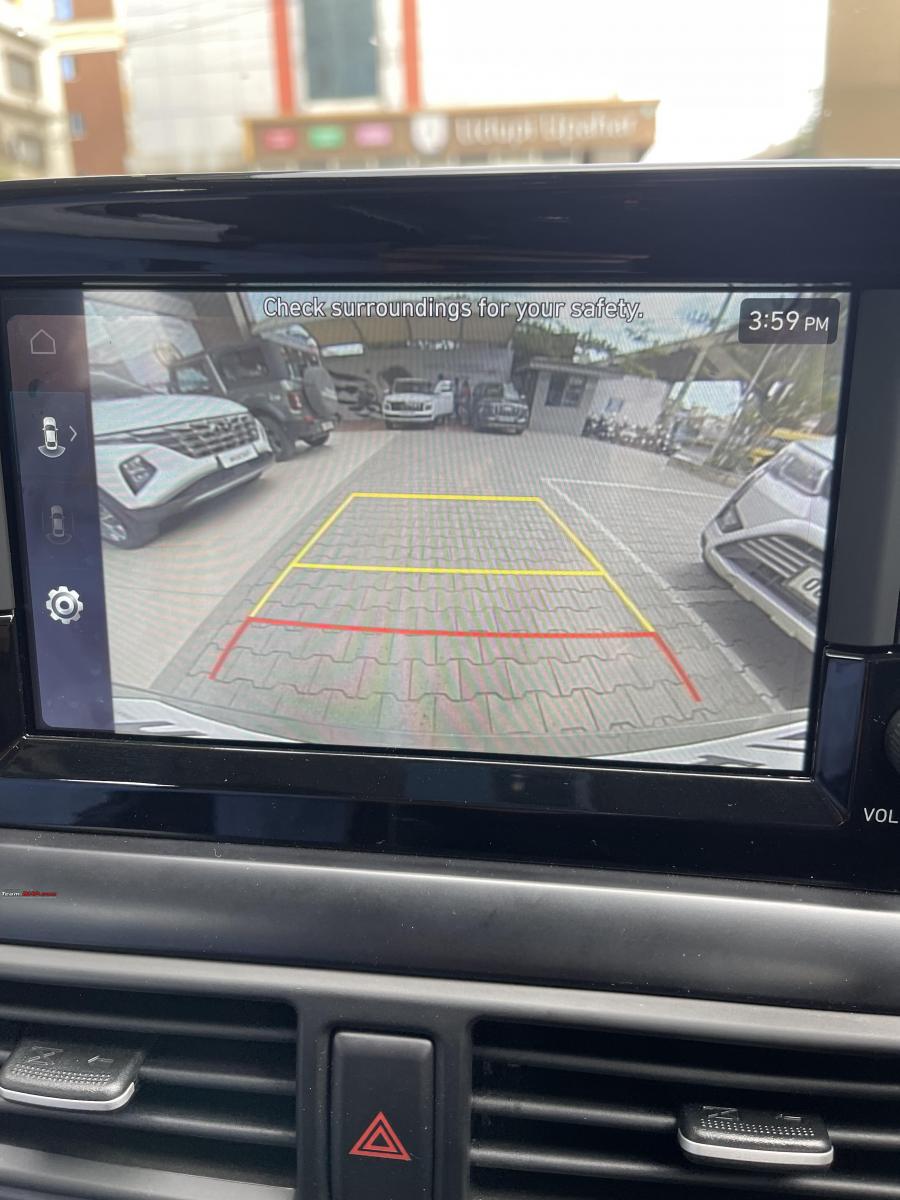
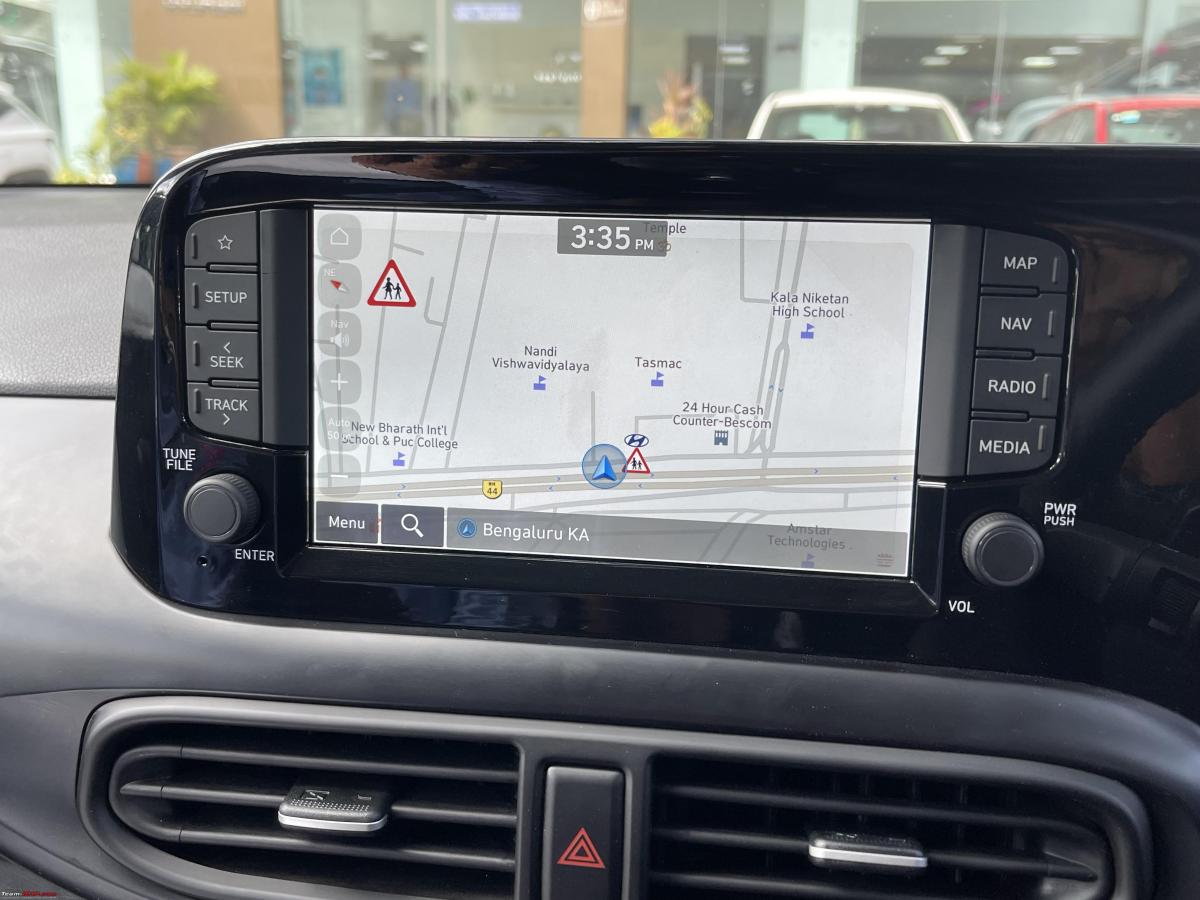
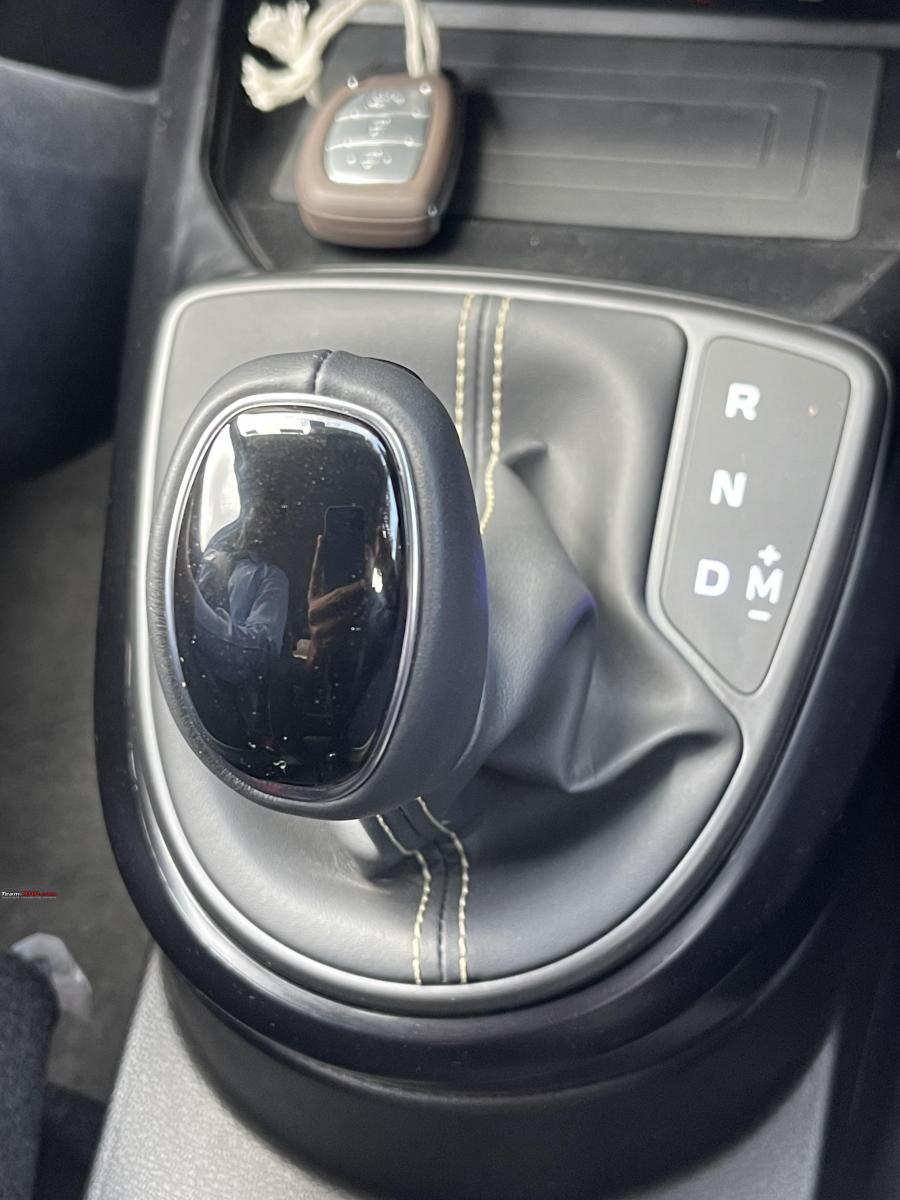
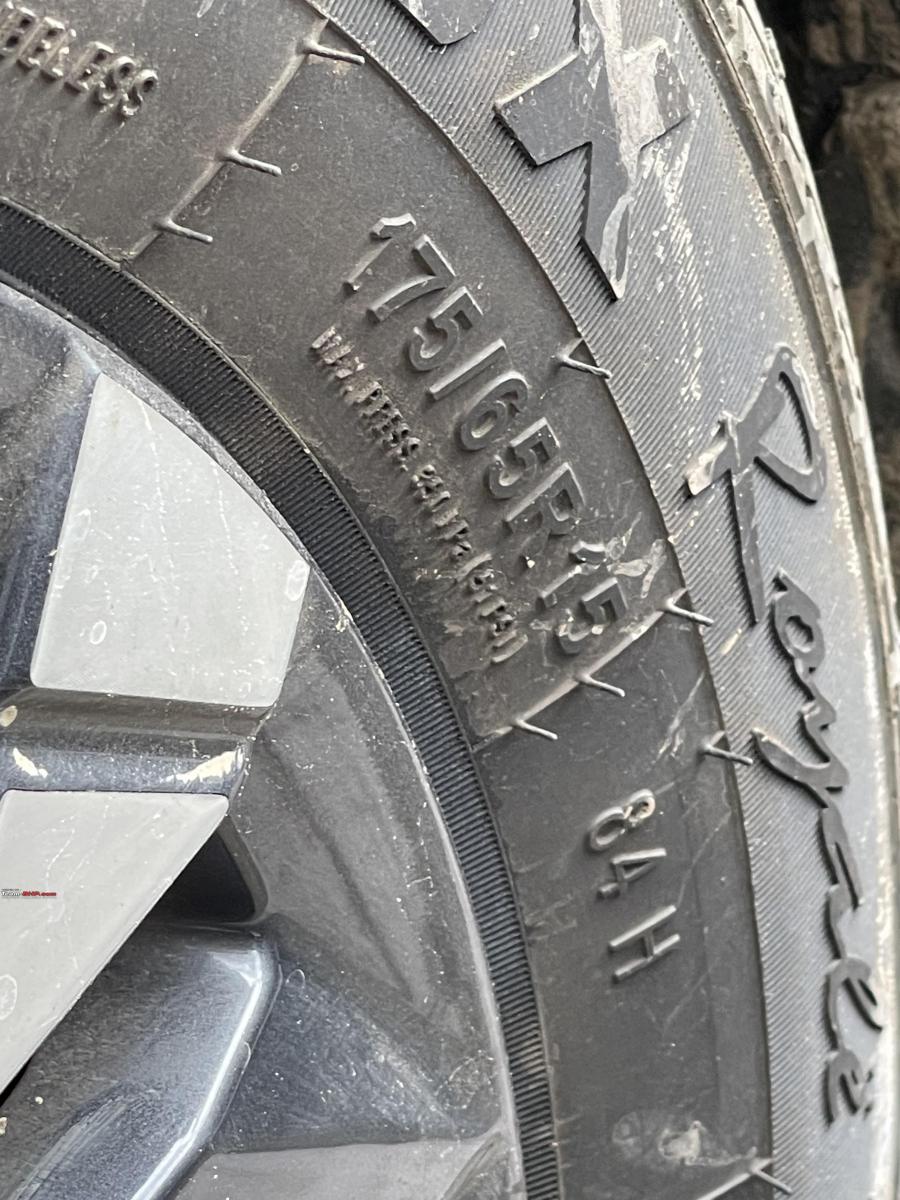
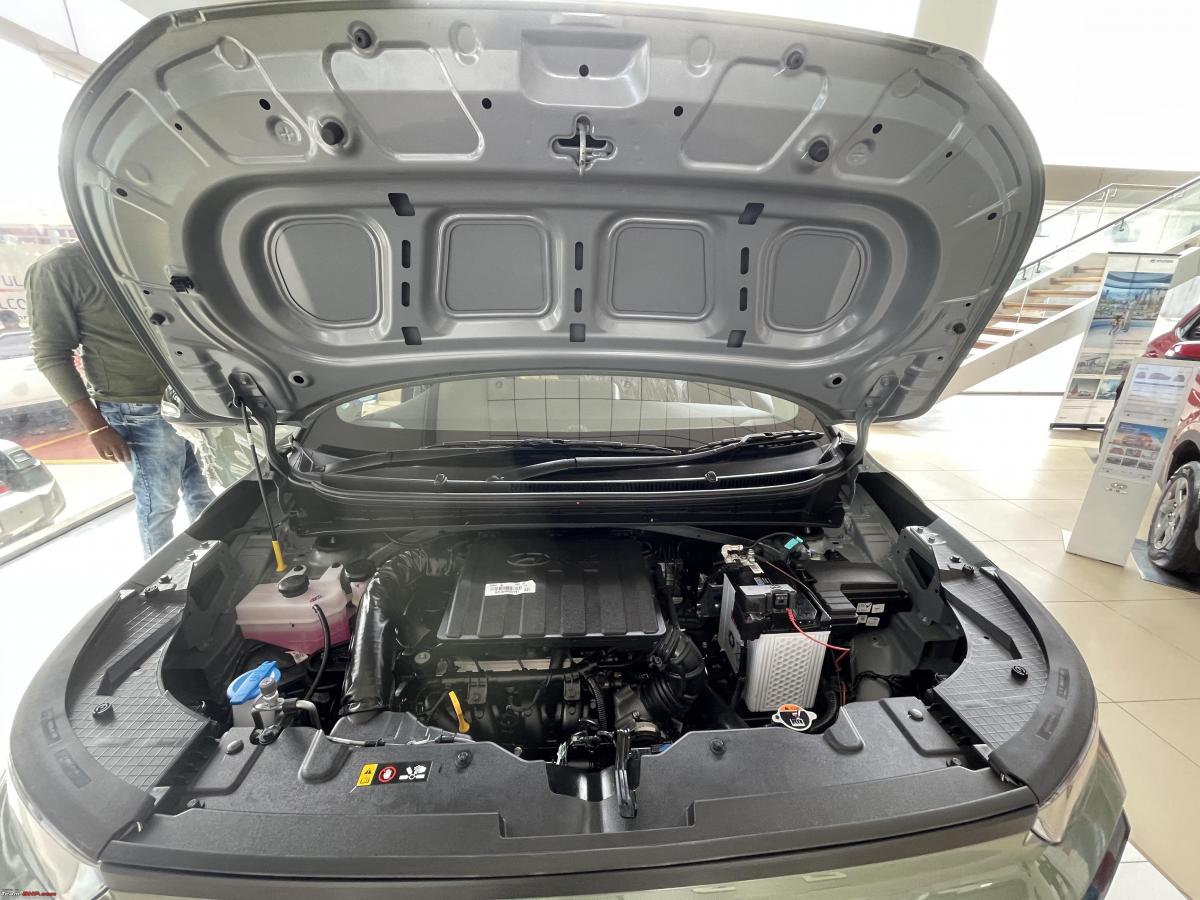
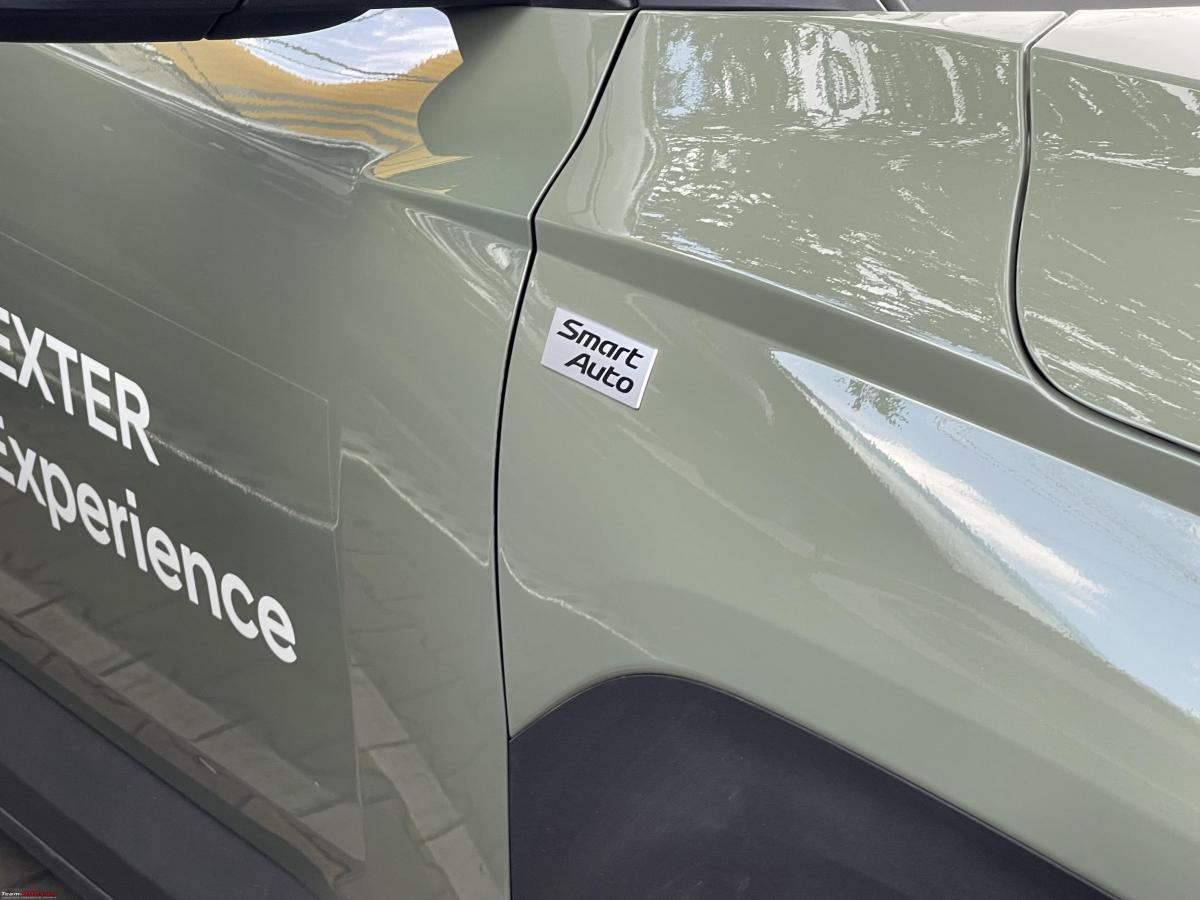
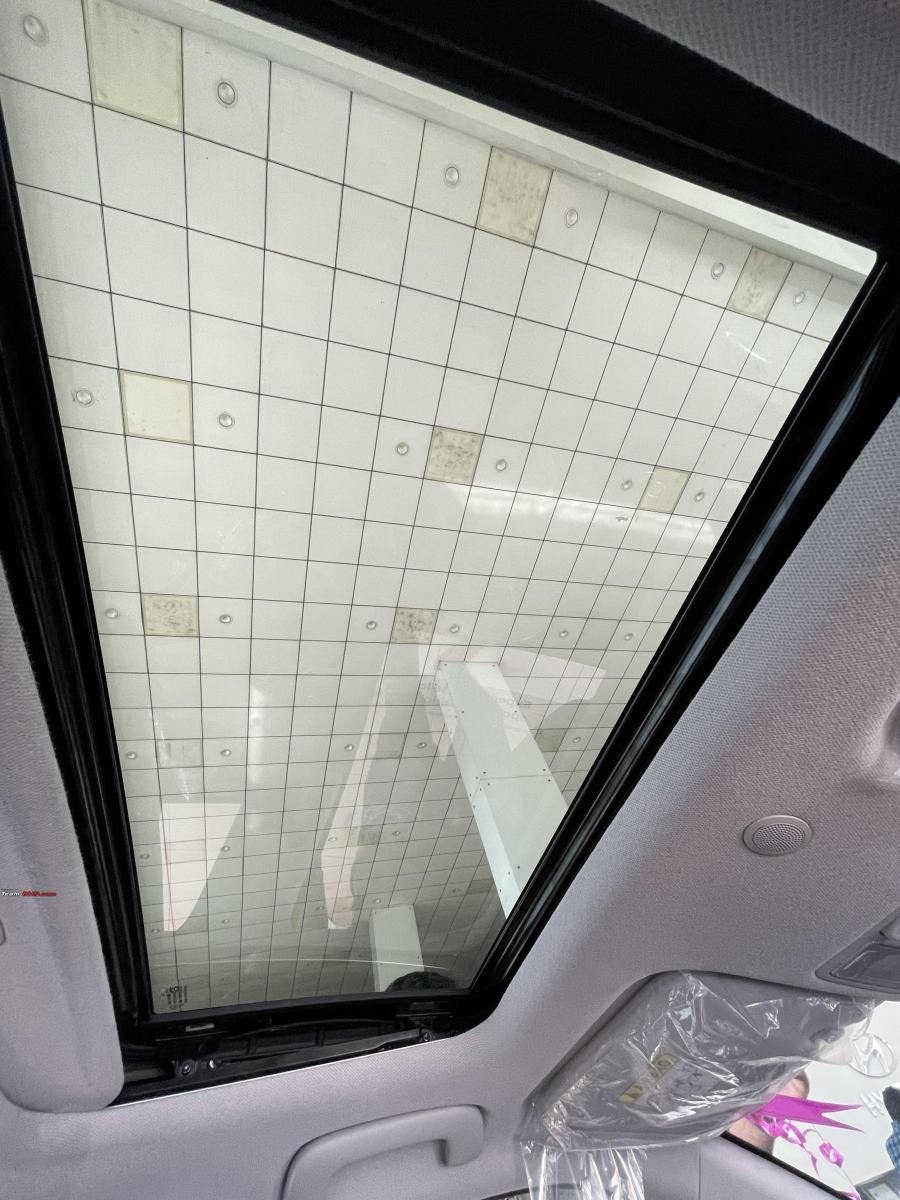
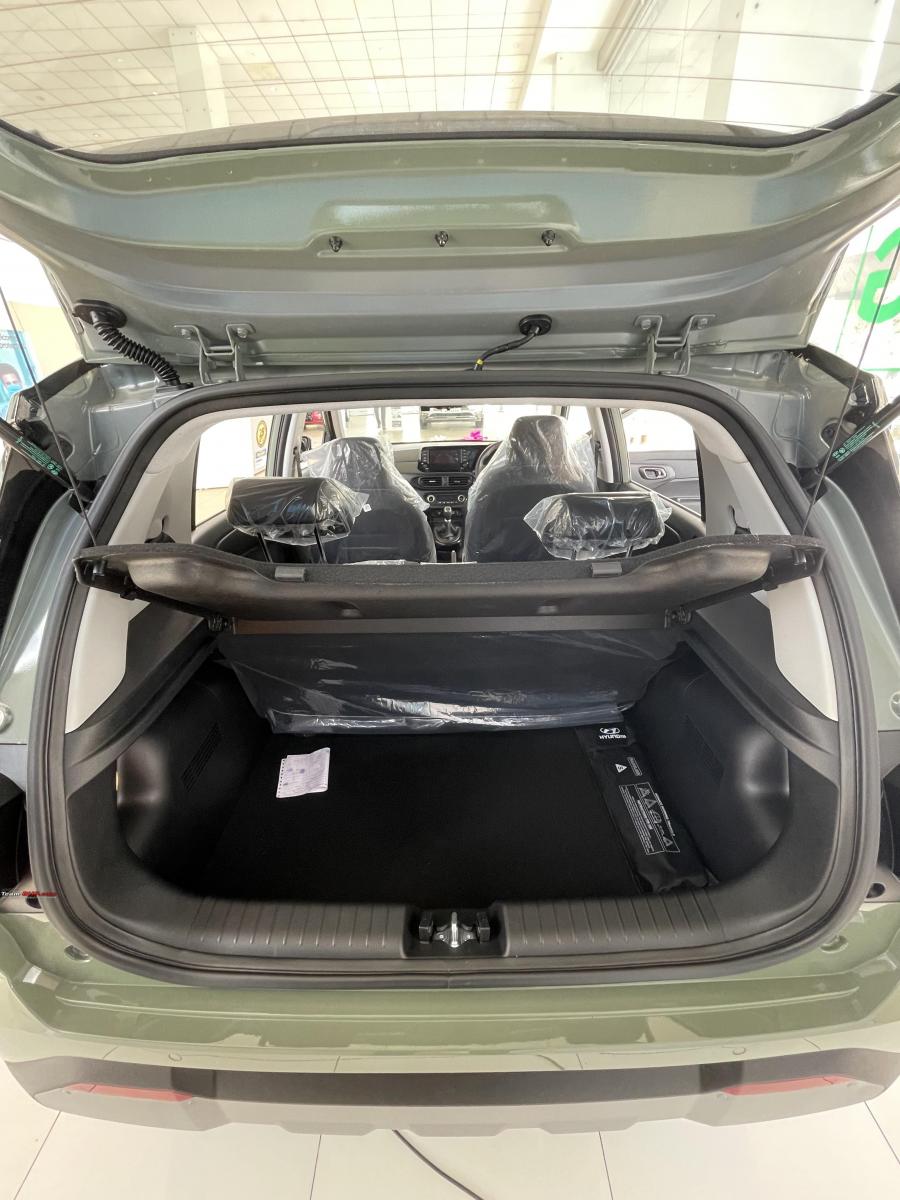
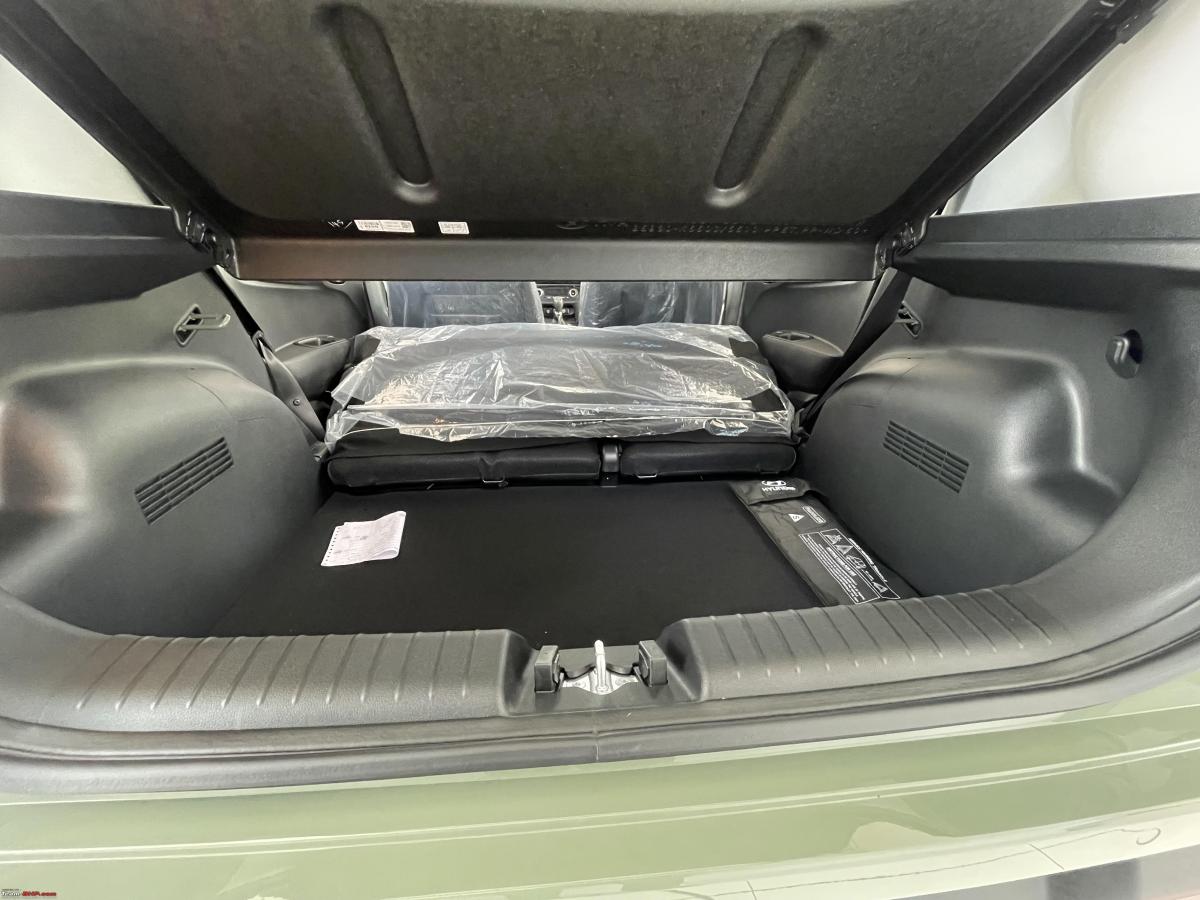
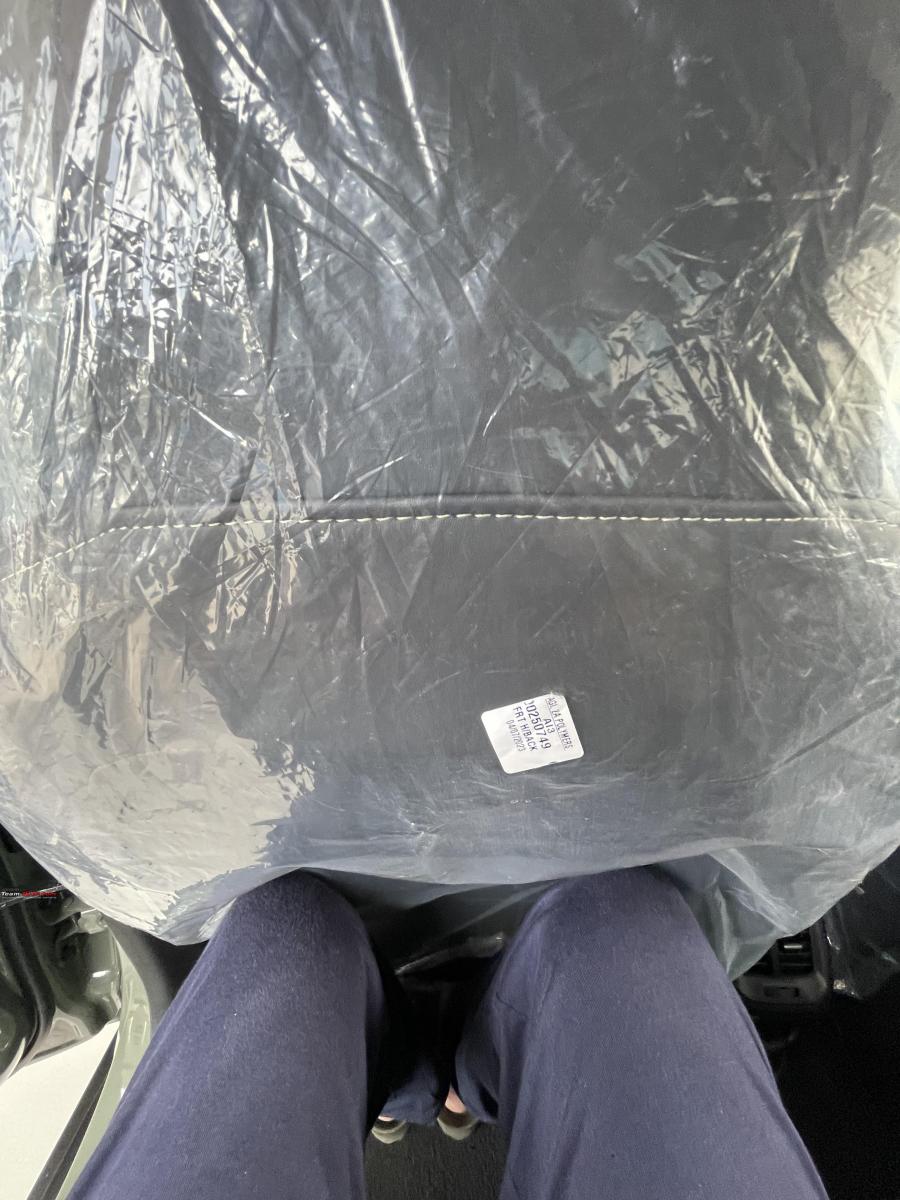
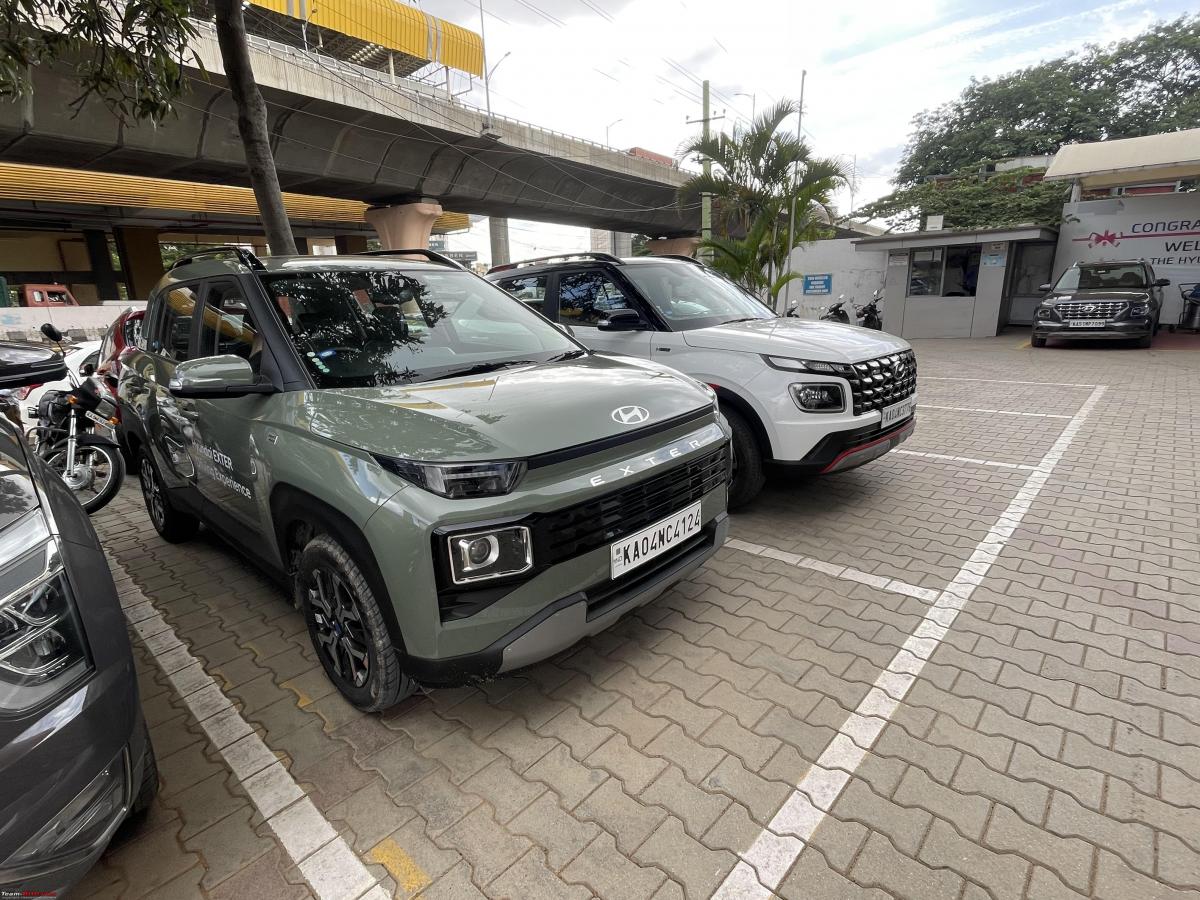
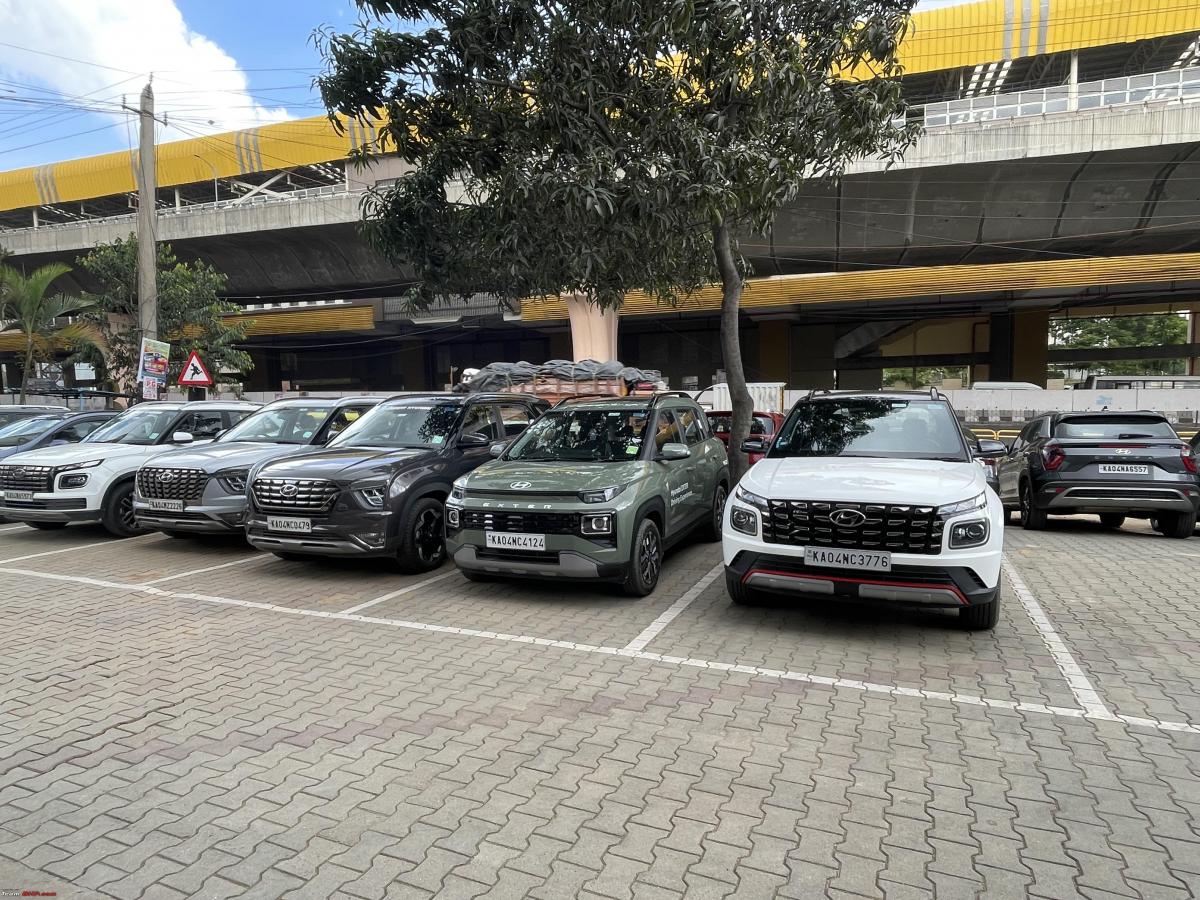
Check out BHPian comments for more insights and information.
- Tags:
- Indian
- Hyundai Exter
- Compact SUV
- AMT
- Petrol
News
My Kia Sonet diesel: DPF errors & other issues leave me frustrated
The issues were not resolved and I couldn't take the vehicle back to the service centre, as the service centre is more than 100 km away
BHPian vamship recently shared this with other enthusiasts.
Below is the sequence of events:
March end 2023 (9500 KMs on OD): Due to a rat bite issue, the service centre removed and refitted the vehicle's wiring, as they said there was an exposed wire somewhere which was causing the ABS sensor issues. They kept the vehicle for almost two weeks to identify and fix the ABS issues.
There were no issues other than an ABS sensor before wiring R&R.
After this wiring R&R, I started seeing two main issues:
Vehicle randomly powers off when the clutch is depressed/used.
- It's very random and there is no pattern.
- If the vehicle is at very slow speed(5-15KMs), the engine totally powers off, and I will have to manually start the engine(I have now learnt to look out for this issue at low speeds, and let off the clutch slowly and the vehicle starts with a Jerk)
- If the speed is at a bit higher speeds(25-100), and I let go of the clutch very slowly, the vehicle keeps moving and starts itself with a slight jerk.
- The issue can be very picky, sometimes it will never show up for 100s of KMs, but sometimes bother me continuously for a full day.
- Here is the video of the same issue, u can identify when the engine powers off as all the cluster lights come on for a sec.
I get DPF issues every 200 to 300 KMs(after successfully parking regeneration). I even got it once within 50KMs for parking regeneration.
Image1 (did parking regeneration at 15400 km):

Image2 (received DPF error again at 15700 km, actually at 15640 as I could take pic only after reaching home):

April 2023 (10500 KMs): I take the vehicle to the same service centre that did wiring R&R, and they were more interested in doing the 3rd service than fixing the problem. As I couldn't replicate the vehicle powering-off issue when the clutch depressed, they just checked multiple things and said everything is OK.
The issues were not resolved and I couldn't take the vehicle back to the service centre, as the service centre is more than 100 km away and we had multiple marriages in immediate family and relatives. The vehicle accumulated a lot of KMs during this Month
May 2023 (14500 KMs): I take the vehicle to the same service centre that did the wiring R&R, they say they found a neutral sensor wire being loose, which they fixed and said they also checked everything about DPF which has no problems. Kept the vehicle for almost 1 week.
- Checked fuel pump and fuel filter, and no issues found by the service centre
- Checked Fuel quality from the fuel tank and diesel filter, with no issues.
- Removed all DPF sensors, found no issues so fixed them back
- I left the vehicle at the service centre, they identified a neutral sensor wire being loose and fixed it.
- Took the vehicle back after 20 km of test drive, and asked them to check all the DPF values. During this, I noticed the "Total regeneration demand counter" being 255 and I asked about it. They said it could be the number of times the vehicle did "Auto regeneration"
June 2023: I still am facing both the above issues, and as I am now back in Bangalore, took the vehicle to the nearest service centre. I asked the service centre to check the DPF values again and I see the "Total Regeneration demand counter" at 255. The guys here say this value is not related to "Auto DPF Regeneration" and it's related to soot particles.
Does this mean the Auto regen is not happening in my vehicle?
I have now left the vehicle at Bangalore service center, and hope the issues are resolved.
Check out BHPian comments for more insights and information.
- Tags:
- Indian
- Kia Sonet
- Diesel
- Compact SUV
- DPF
News
Looking to buy my first car on a 13L budget: Which compact SUV to buy?
Features like wireless charging, sunroof, ventilated seats, cruise control are nice to have but not mandatory.
BHPian vigneshMC recently shared this with other enthusiasts.
I need your help in deciding my first car. Although my parents have a car (2017 Baleno) in another city, technically this is going to be my first car.
About me, Although I love to drive , I prefer to go with mind over heart. We are family of 2. Rear seats will be occasionally used.
Requirements
- Budget around 13.5L - cannot extend much.
- Petrol and Manual.
- ASS should be good (Yeah Maruti spoiled me).
- Good reliability as I am planning to keep car for long time.
- Features like wireless charging , sunroof , ventilated seats , cruise control are nice to have but not mandate.
- Good Infotainment with support for AA and reverse camera with sensors.
- CSUV/SUV is preferred but open to other choices.
Below are the cars I have shortlisted and concerns I have on them
- Creta E - Only base variant on my budget - Doesn't have infotainment or reverse camera , I have seen lot of conversions from base to mid variants, may have to settle for that.
- Seltos HTE E- Same points as Creta.
- XUV 300 W6/W8 - I have seen lot of people preferring Diesel for XUV300 , want to know how good is XUV 300 petrol variant and engine reliability as Mahindra are experts in Diesel engine.
- Brezza ZXI - Has good features but not sure how well it will age.
- City SV - Base variant, will miss out lot of features.
- Honda Elevate - Have to wait for pricing and variants.
I am not considering below cars
- Nexon - Not good ASS and QC issues.
- Kushaq and Taigun - Expensive for its size.
- Venue and Sonet - For some reason , I don't like them . I prefer to have hatchbacks instead of them.
- Fronx - Since its based on Baleno , we already have one.
I plan to book and buy around September . I am also open to wait for any new launches .
Here's what BHPian SNA411 had to say on the matter:
You haven't mentioned how old you are, and whether you have a family or not, but assuming that you're young-ish, and rear space is not a constraint, how about something a little more sporty-ish? Like the i20 N Line?
One life, live it. You have the whole life ahead to drive boring cars.
Out of this shortlist, the xuv300 or the city.
Although the former's facelift is around the corner
Here's what BHPian bala02 had to say on the matter:
Out of all the cars you have mentioned XUV 300 has the best rating in terms of safety. Though Brezza is a very nice vehicle with a 4 star rating, its not great for highway spirited driving. The only downside of XUV 300 is it's limited boot space. I seriously considered buying XUV 300, but bought a Nexon because of its boot space.
Here's what BHPian bijims had to say on the matter:
If you are looking for the aforementioned features within your budget, then you have to settle with sub 4 metre compact SUVs lke the Nexon, Brezza etc, otherwise if you are willing to sacrifice features for a larger SUV, then the Creta and Seltos are your best options, the Seltos is due a facelift soon, and many dealerships have started accepting unofficial bookings for the same too, so the current generation is therefore heavily discounted, you could get a good deal.
The XUV300 is a good choice as far as safety is concerned but has a paltry boot.
Do test drive each one of them, so that you get the feel of the car. Now coming to my recommendations, if you are going for a sub 4 metre SUV, the Brezza would be a good choice, else the Creta in larger SUVs, if you are going for a sedan, then Verna and City are good options.
Read BHPian comments for more insights and information.
News
Moving from driving a small car to a bigger SUV: Tips & advice
I know eventually people get used to the vehicle dimensions, but this is more to get to understand what to expect and how to navigate the initial few months to make the transition smooth.
BHPian dass recently shared this with other enthusiasts.
I have been driving for well over 20 years now. Have had an Indica, Dzire, I20, Ritz, Ertiga with me and extended family that I have driven extensively.
I recently purchased a Harrier and while I took a lot of test drives and felt ok, I was wondering if there are any tips that can be shared with people who move from a smaller hatchback/CS/Sedan to a bigger SUV. I know eventually people get used to the vehicle dimensions, but this is more to get to understand what to expect and how to navigate the initial few months to make the transition smooth.
Here's what GTO had to say on the matter:
A most pertinent thread when you consider India has moved from being a hatchback market to a crossover one. What's more, all the action is in the 15 - 30 lakh segment with SUVs like the Hector to the Safari, and the Creta to the Scorpio-N.
My two paise:
With any new car, take your time in getting familiar with the machine. Every car model behaves differently (engine, gearbox, suspension, brakes etc.). Depending on the driver, it may take anywhere between 200 - 2000 km to fully understand a new car. Personally, I need a minimum of 200 km and my standard routes are Mumbai - Nashik, Mumbai - Lonavla - Mumbai or the Mumbai - Pawna road.
- Take your new car out for a good highway run or weekend holiday. Say, 200 - 500 km. More than any amount of city driving or the home-office commute even for a month, this single highway trip will "connect" you with your car.
- Bigger cars conceal speed better. Keep an eye on the speedometer needle.
- An SUV / tall crossover usually won't handle as good as a hatchback or low-slung sedan like the Rapid. Especially, say, the Harrier with its sensitive steering at 120 kmph, a Hector with its soft wallowy suspension or the top-heavy body-on-frame Scorpio-N. Be conservative around corners.
- It does take people time to get used to parking big cars in urban confines, although the latest tech (360-cameras, front & rear sensors etc.) makes things easier. The more you park, the better you'll get at it.
- With great power comes responsibility. If you're jumping from an i20 1.2L NA to a 200-BHP XUV700 turbo-petrol, take a lot of time getting used to the power on tap. Pro Tip = run-in your engine (ARTICLE: How to Run-In your new car) and gradually increase the revs. The engine will like it, and so will your brain get accustomed to the 200 horses slowly & steadily.
- Watch out for those blind spots in modern SUVs. They are prominent. The EcoSport's A-Pillars can hide a scooter. The Safari's A-Pillars can hide a full hatchback! The rear-quarter view in all crossovers sucks.
In a nutshell = take your time & go easy for the initial couple of hundred km . I've seen some idiots go vroom vroom in a brand-new car and they end up in a ditch or become a part of the wall.
Additionally = HAVE FUN! You worked hard for the upgrade, so enjoy every km of it
Here's what BHPian ampere had to say on the matter:
While one can easily get used to the inner space and comfort of a bigger car it's the external presence you need to realise. Many places you need to plan to go or not to go depending on the roads and widths and parking/coming out.
Turning radius is another aspect that you need to understand. Many big cars have smaller turning radius. It's just a matter of knowing your limits.
Apart from size the next big thing to get used to is the power. A higher power definitely means, a small push of the throttle and you can feel the acceleration building up. Thats one thing you need to get used to and understand as well.
Here's what BHPian libranof1987 had to say on the matter:
One of the biggest differences: momentum! And the magnitude of momentum plays out when your turning or during sudden acceleration / braking. It's not going to be as subtle as a hatchback. The bulk of a larger vehicle makes its presence felt.
Spend some time getting used to the vehicle driving dynamics and braking.
Especially in the early days, you're going to doubt your judgement during turns and bumper-to-bumper traffic the most, as you acclimatise to the extremities of the car. Keep a generous buffer while you get used to the dimensions.
That said, you'll be just fine. Don't sweat too much, enjoy your new car!
Here's what BHPian ab737max had to say on the matter
First of all, Many congratulations on your new Harrier. Great choice ��
Now, coming to your point, I myself upgraded petrol swift to diesel XUV700, and following are the things I noticed.
1. It takes a sometime to get adjusted to so much power available on tap.
2. Big cars have bigger blind spots, be careful of that.
3. Driving a new car with latest tech is much easier than driving an old vehicle. Especially, in my case I moved from hatchback to SUV and I am loving the driving position.
4. Parking a big car is the biggest problem, especially in a metro like Bangalore.
5. Moving is tight spaces is not as easy as it used to be. It takes sometime to get used to it.
Enjoy the rush!
Read BHPian comments for more insights and information.
News
My Kia Sonet D AT: Significant observations after 20 months & 30000 kms
As far as fuel efficiency goes, if MID shows 15kmpl, tank to tank will be 12kmpl. There is a variation of 2.5-3kmpl between MID and tank to tank always.
BHPian harry10 recently shared this with other enthusiasts.
I have a HTX D-AT. It's been 20 months since we got it. Driven more than 30k km. Few points:
- HTX has wireless Carplay and I use it always. However it's not a make or break feature as anyways my iPhone is always connected to the wire for charging. So, it's a good convenience feature but not a must have.
- Engine is fantastic. I drive in Normal mode mostly. Eco mode only in jams. Sports mode only on highways. NVH is very good. At idle sitting inside we can't even say it's a diesel. I used to drive friends Nexon diesel AMT before I got this. Torque converter is miles ahead of Nexon AMT. Gear shifts are butter smooth and many a times people sitting inside don't even notice a shift. Even manual mode with Paddle shifters is fun to drive. Haven't driven DCT sonet so can't comment with comparison.
- Suspension is little stiff. But if we keep 33 psi in all tyres in City it's quite manageable. 35 psi on highways.
- AC is absolute chiller. I was driving Honda City diesel before this which had a killer AC. This is even better because of less area in the cabin than City. Right now it's 44-45* temperature in Delhi. Takes 5-8 minutes for it to cool down the inside temperature even when parked under the sun.
- Mileage- If MID shows 15kmpl, tank to tank will be 12kmpl. There is a variation of 2.5-3kmpl between MID and tank to tank always. In Delhi with AC these days I am getting between 12-14kmpl. On highway drives to Punjab or other places I get between 18-21kmpl depending on traffic conditions. Without AC there is a jump to 2-3kmpl.
- Service so far has been a fantastic experience. Even better than Honda. I even had an accidental claim when car was at 11k km. Seamless experience. Service cost varies between 6-9k. My other car is a Tata. Service experience is day and night difference.
In nutshell I am extremely satisfied with the car till now. Can easily recommend it to anyone if they want a D-AT.
Check out BHPian comments for more insights and information.
News
Buying a Kia Sonet: Confused between the petrol DCT & diesel AT
My impressions of the brief test drives was that the 1.5 diesel was pretty refined. The TC gearbox felt excellent - very responsive and smooth
BHPian FHM recently shared this with other enthusiasts.
I am planning to buy a top-of-the line Sonet with either the 1.0 petrol DCT Auto, or the 1.5 diesel TC Auto. Would those of you who have experience of both of these variants please share your thoughts?
I have briefly driven both of these, and I will of course take more extensive test drives. But in the meantime, I would be interested in your experiences.
Notes: My only consideration for choosing between the two engines is driving pleasure and the ability to overtake briskly. Also of importance to me is powerful AirCon. I like proper cooling without running the fan at high speed. I prefer keeping the fan at a speed where the noise is not intrusive, yet have sufficient cooling on hot days (I live in Mumbai). I am not concerned with fuel economy, nor am I bothered by any price difference.
My impressions of the brief test drives was that the 1.5 diesel was pretty refined. The TC gearbox felt excellent - very responsive and smooth, even with sharp kick-downs. What I did notice was the 1.5 diesel AirCon seemed to cool better at the same temperature and fan settings than the 1.0 petrol. The Sales advisor confirmed that indeed the 1.5 does cool better, though he was at a loss to explain whether that was due to a more powerful compressor, or some other reason. If any of you have noticed this difference in cooling between the two variants then I would like to know.
The 1.0 petrol engine was of course more smooth and refined, though not much more so than the diesel. Unfortunately I was not able to test the DCT gearbox sufficiently due to traffic conditions.
For reference, I am an enthusiast driver and I understand cars. Hence I would like to get the Sonet with an engine that is more enthusiast oriented. My current ride is a BMW 3 Series. The Sonet will second car and will be used in town as well as out of town.
I would appreciate your thoughts. Thanks in advance.
Here's what BHPian bijims had to say on the matter:
The 1.5 Diesel AT is faster, torquey, and more frugal than the 1.0 DCT ever will be and is a better buy overall in any circumstance if the price isn't an issue, Considering the fact that it is the same engine and gearbox combo doing work on the larger Creta. Seltos, Alcazar, and previously Elantra and Verna, it is the best version of the Sonet you can get.
You wouldn't regret your purchase if you go for the Diesel AT over the petrol DCT, In my case, when I bought the Sonet Diesel AT, the price difference between the 1.0 Petrol DCT and 1.5 Diesel AT was hardly 50k, so it was a no brainer, but with Dieels becoming more expensive with the BS6 Phase 2 norms, the price difference has risen to over 1 lakh ex-showroom, this is the only reason why you may decide against the 1.5 Diesel AT or maybe perhaps the aversion towards Diesels in recent times due to the "upcoming" emission norms or a "future" ban on diesel cars.
A point to note about wireless Android Auto and Apple Carplay, initially wireless android auto and Apple car play had a limitation on working on custom-sized screens like 10.25 inch, etc, but that was ages ago, but Kia/Hyundai still hasn't fixed the same even on newer models, don't know why.
Here's what BHPian epiccross had to say on the matter:
As rightly pointed out, as an HTX owner who has Wireless Android Auto/Carplay, it's absolutely not a dealbreaker. Battery drains fast with Wireless AA and I eventually plug it in anyways.
VW Taigun etc. has reliability issues and Aircon is pathetic, to say the least. The AC in Sonet is terrific, just turn it out and it cools the cabin within no time. Plus the drive is great, I would recommend if you don't have reservations in going with Diesel. I did, and yet I went for Sonet as the engine/gearbox combo is SO good!
Here's what BHPian ArijitGupte had to say on the matter:
As far I understand, CarPlay and especially Android Auto are battery hoggers.
With wireless charging the charging rate might not be at the same level as the battery drain and will actually defeat the purpose.
As for wireless feature coming in the older cars, I have a GTX and whenever I step in the car, my phone auto connects and has a notification that Android Auto is available please connect a cable. So the phone knows about the cars capabilities, guess the cars infotainment may already have the wireless feature just not fully enabled.
Check out BHPian comments for more insights and information.
News
My Kia Sonet diesel AT: 8 key observations post 1000 km & first service
Engine is pretty silent. Sure, there's some noise at higher RPMs, but since I'm coming from a diesel Amaze, I'm not bothered by it.
BHPian epiccross recently shared this with other enthusiasts.
My observations with the Black Beauty (HTX D AT) - Post 1000+ KMS and First Service:
- The car's just a JOY to drive. Coming from the 2014 Amaze (2019 Altroz), and other autos in the segment, the car is so much fun to drive. The downside being it's very hard to not push it but I'm trying hard to restrain myself to get better FE in the city. I've turned into bit of a heavy footer post experiencing the fun of the sheer power/torque this car has!
- Engine is pretty silent. Sure, there's some noise at higher RPMs, but since I'm coming from a diesel Amaze, I'm not bothered by it. Nothing some music won't drown out. I guess people who're used to petrol engines will find it a bit more intrusive. But otherwise NVH is excellent.
- Overtakes are still damn addictive and you'll never need to second-guess yourself. You don't even need to put pedal to the floor for quick overtakes. Sports mode is something else!
- Ride and handling feels good. Car has never felt unpredictable, steering weighs up well on high speeds and is sufficiently light (not as light as the Altroz though) at low speeds. Suspension is a decent middle ground, but the loud thud is a bit annoying. You have to slow down more than you'd think you should over speedbreakers and larger potholes or you'd hear a "thud" noise. I'm still not a 100% used to this, but it's gotten much better. The car absorbs small undulations/cats eye/uneven surface etc. well enough at decent speeds, and just glides through. And the biggest plus of the suspension is, it's such a joy to drive on highways/good roads, cornering has way less body roll than my Amaze at higher speeds. Also, manouvering the car in city is pretty easy, so that's a big plus. This is one of the reasons of me not going a segment above or so.
- Fuel efficiency, I've gotten 10-12 in city with bad traffic and 15-17 on highways (always AC on). But better drivers have extracted like 20 from the car, so can't complain. I basically go throttle-break-throttle often, plus I've gone a bit heavy footed, so trying to fix that. You can realistically get the ARAI FE on highways.
- Headlights are not at all satisfactory. You just can't travel with lower beams with decent speeds, the throw is not sufficient enough, neither is the intensity. Forces you to go high beam. This sucks, especially considering where I live right now has barely any streetlights. Altroz is better here with its normal Halogens. Kia/Hyundai should seriously sort this out!
- Did a long trip of round 300-400 KMS, and it was a joy. Android Auto works flawlessly, except my phone's in battery saver and kills it in the background. Everything works as it should. The second reason for us to choose this beyond the segment-unique drivetrain was the excellent feel the cabin gives, just a lovely place to be in. A lot of people just are dismiss of this, but it's a real boon when you have to do such long trips. You never feel exhausted, even in the HTX trim!
- Just completed the first service at DKH Kia. Waiting times for pickup was longer than I'd expected, had to book more than two week in advance to get a service with pickup and drop. Since it's the first service, I didn't mind it so much. The staff was courteous and they constantly kept me updated on the service. The only issue I had was that they delivered the car with crazy low fuel levels, like DTE was around 22KM, which made me panic a bit as I was stuck in traffic and that isn't exactly reliable. Thankfully, pulled through and reached the nearest fuel station without much drama.*
Overall very happy with the car - I'm someone who has constant buyer's remorse, but the car with that sweet CRDI 1.5 + 6AT is so sweet that it never leaves you disappointed!
Check out BHPian comments for more insights and information.
News
Analysis: The downfall & extinction of D-segment sedans in India
From April 2023, due to the BS6-RDE emission compliance phase in India and reluctance on the part of Skoda to upgrade drivetrains, became the final nail in the coffin of the Octavia and Superb.
BHPian pqr recently shared this with other enthusiasts.
Graveyard of premium sedans
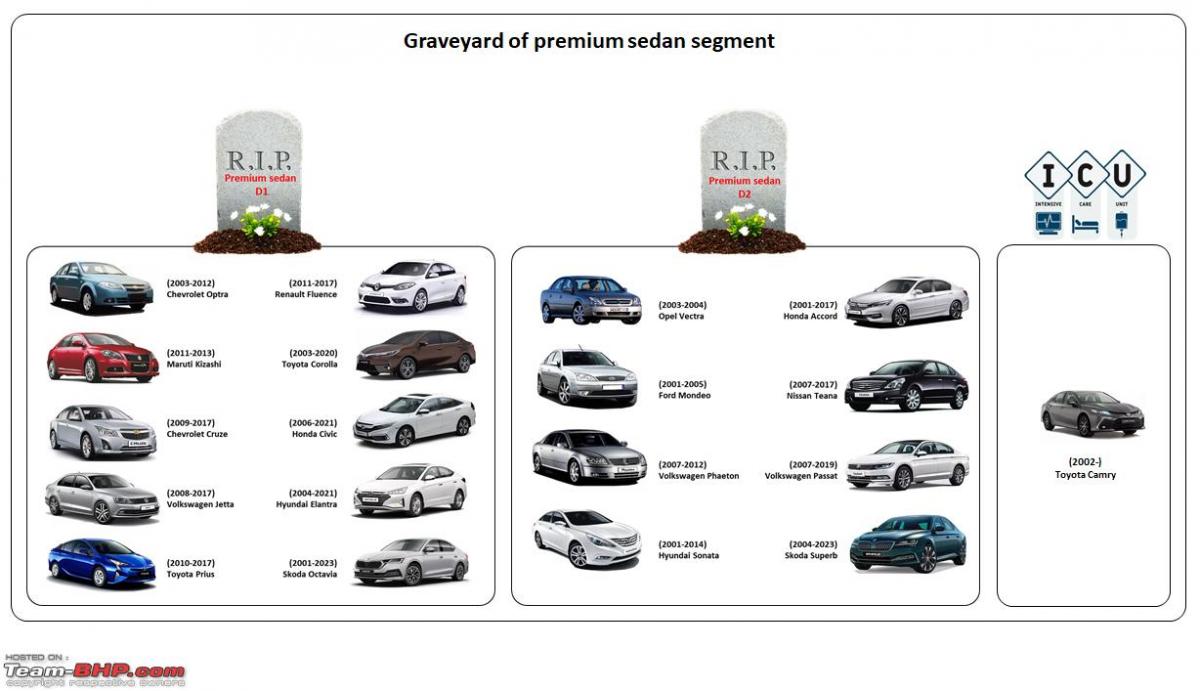
From April 2023, due to the BS6-RDE emission compliance phase in India and reluctance on the part of Skoda to upgrade drivetrains, became the final nail in the coffin of the Octavia and Superb. As production of non-compliant BS6-RDE passenger vehicles was not allowed after March 31, 2023. However, sales of BS6-compliant vehicles produced before April 1, 2023, are still allowed.
With that, an era of premium sedans also came to a grinding halt as the Camry hybrid remained the lone player on ventilator support from Toyota.

Overall, the 2023 sedan landscape does not look promising either. Sad news for many remaining sedan lovers, but this story had a quite an upbeat start in 2001.
Premium sedan segment
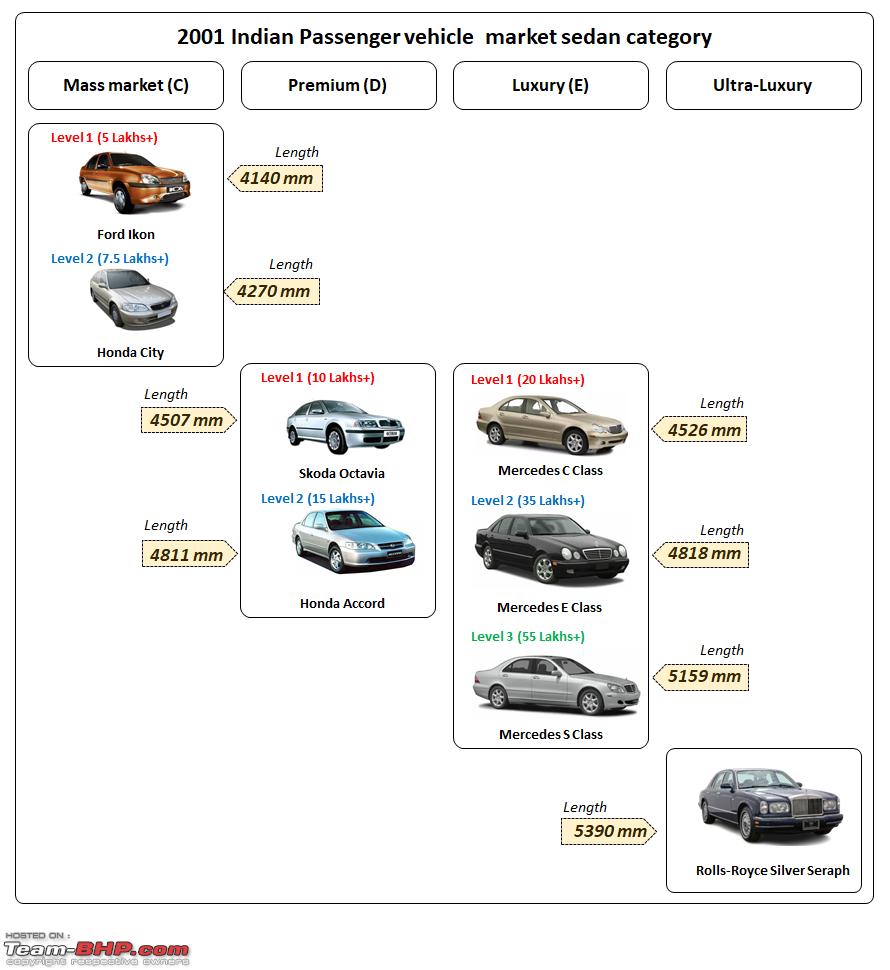
So, what exactly is India's premium sedan segment?
For that, let’s revisit the starting point. India's economic liberalisation began in the early 1990s. By the mid-90s, many foreign carmakers started investing in India and brought new sedan products from their global portfolios.
These products were contemporary with new-age technology in comparison to the archaic Hindustan Motors Ambassador and Premier Padmini, which remained staple sedan products for decades due to the government’s policies.
Then came the new hierarchy of sedans. There were mass-market sedans (C1) with a low entry price point like the Ford Ikon, Maruti Esteem, Fiat Sienna, etc. Then there were a few more powerful and larger categories of sedans, like the Honda City, Mitsubishi Lancer, and Opel Astra, etc often called mid-size sedans (C2).
In 2001, Skoda launched the Octavia in India. It was larger than the Honda City, with a much larger engine and thus more power, and an upmarket interior with more new age features, as well as some top end features of the lower segment (C2) being standard from the start. Thus being more premium in every aspect, thus earning the ‘premium’ tag or ‘affordable luxury’, also referred as D1 sedan segment in India.
In the same year, Honda and Hyundai launched the Accord and Sonata, respectively, which were a size bigger from the Octavia and thus entered the second and higher level of the premium sedan category with even even more in-cabin space, also referred as D2 sedan segment in India.
In luxury parlance, there were the Mercedes-Benz C-Class and E-Class, respectively, of similar size with better cabin experience and driving performance, thus commanding a much higher price.
Cars have always been a status symbol in India, and in the era of the sedan, the longer the sedan, the higher the prestige value. This made this particular hierarchy from 2001 a little more rigid.
Important to note here is that products in the premium and luxury segments are global in nature, with little customization for small local markets. They arrive in India via either the CKD (completely-knocked-down) or CBU (completely-built-unit) import route, attracting differential custom duty and remaining vulnerable to foreign exchange development.
Rise and fall of premium sedan segment
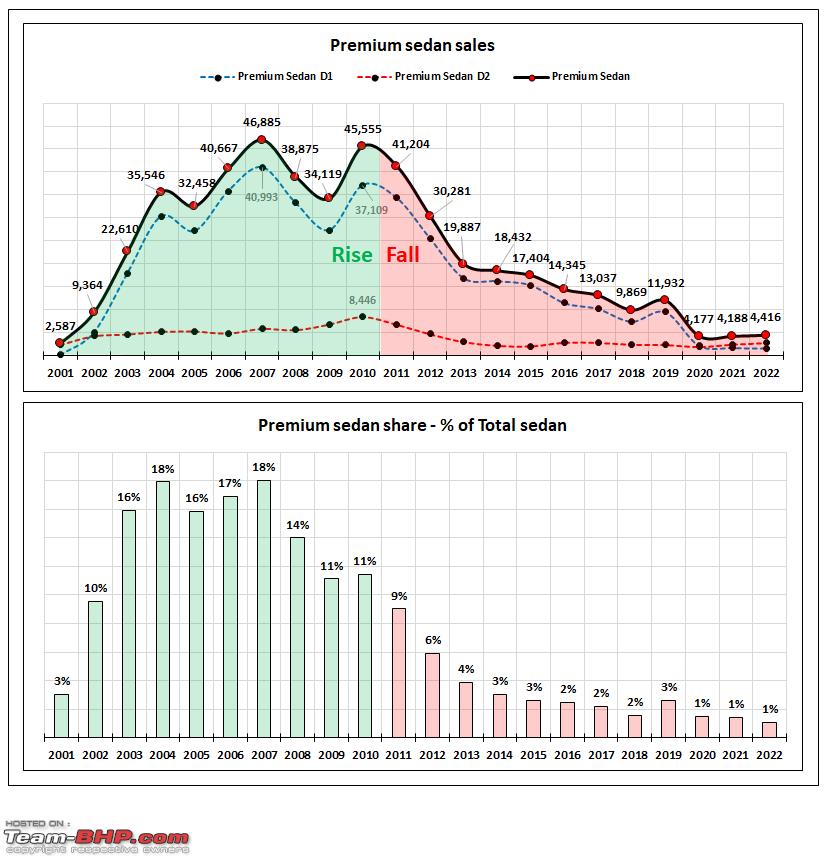
With different brands bringing in new products, the premium sedan segment grew rapidly until 2007. By that time it had reached its peak of 18% share in overall sedan market. The global recession and slowdown in growth of the Indian economy resulted in subdued consumption in 2008 and 2009. Following that, 2010 sales nearly reached its previous peak.
And that’s where the story of the decade-old rapid growth of the premium sedan segment ends. All of a sudden, since 2011, demand for premium sedans has started to fall. So what started shifting the demand away from the premium sedan segment?
Tremors – fuel price differential and adverse forex development

Following 2010, there was a shift in demand for diesel-powered vehicles, as the petrol-diesel price differential reached an all-time high during the double dip global recession. Premium sedans without diesel engines have come under fire, as the fuel consumption of large petrol engines is higher, resulting in a higher running cost. As a result, diesel sales in the premium sedan segment reached 74% in 2012. Prompting brands like Honda to discontinue both its Civic and Accord models as they had a petrol-only drivetrain option. Products with a diesel heart option survived the storm, but by then another storm was waiting.
The forex rate surged in the meantime, forcing brands to raise prices as almost all of them were having CKD operations with large imported contents. This forced them to raise the price without a commensurate increase in value. Demand began to fall further as a result of price elasticity. As several buyers either switched to a higher trim of sedan from a segment below (C2), as latter also grew in size, with more equipment than before. For example Honda City by then got a sunroof for V CVT variant at ₹ 10.2 lakh ex-showroom price. In higher price band, customers were lured away by heavily discounted entry-level luxury products from German trio.
Were the premium sedan segment market ready for another disruption?
Tectonic shift - SUVfication and a change of heart in Indian customers

This is the time period when SUVs like Mahindra XUV 500 and Toyota Fortuner were also launched in their respective segments, each with a local production base, and each started openly attracting demand for SUVs.
This ensued a new decade, when Indian customers quickly switched to a new favorite body style (SUV) that provides similar in-cabin space with the added functionality of ground clearance. The emotional benefit of an imposing image from the outside and a commanding position from inside, the SUV took precedence over the driving dynamics offered by sedans, and it also helped to overcome the inconvenience of body roll in the tall SUV.
One of the former Director of sales and marketing at Maruti-Suzuki (Mr. R.S. Kalsi) has beautifully summarised this emotional benefit as "Unchi is the new lambi", loosely translated as taller and more imposing SUVs are now the new parlance of longer sedans in terms of desirability and prestige value.
Premium brand : winners and losers
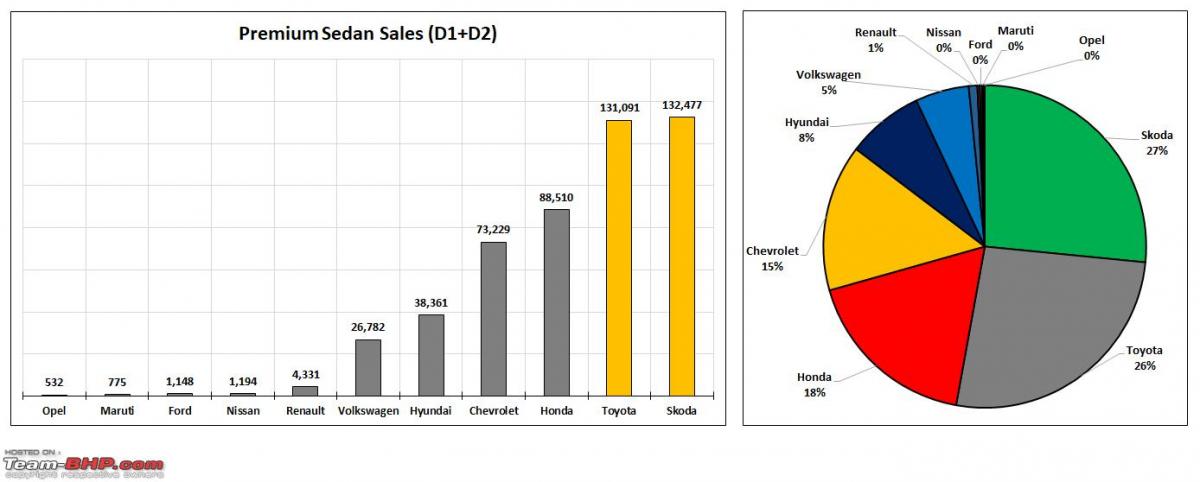
Because these automakers also sold mass-market products, the premium sedan segment became a proving ground for brand identity in India. As premium positioning in the minds of customers can be leveraged for better pricing opportunities. Skoda and Toyota have been the most successful players in the premium sedan segment, followed by Honda and the Chevrolet brand. Despite the success of their premium sedan products around the world, Hyundai and Volkswagen have always played second fiddle in India.

Volkswagen, in fact, worked hard in India to achieve European positioning, where it is one step ahead of Skoda, and charge premium pricing over sister brands – Skoda and Seat. However, that never materialized in India. This is because Skoda has been the definitive brand in India when it comes to premium sedans, and it has also remained an important part of the premium sedan growth story. Skoda’s most affordable product, the Fabia (hatchback), with its initial CKD origin, never diluted its positioning in the mass market segment until the rebadged Volkswagen Vento landed in Skoda’s India stable under the name of Rapid.
Nissan, Renault, and Maruti just ended up with a wannabe image in the premium sedan segment. Ford failed in the premium sedan segment, however, found success with the Endeavour SUV. Opel's story was very short lived, as GM has replaced it with the Chevrolet brand in India.
Premium sedan D1 products : winners and losers

Toyota led the way in premium sedan D1 segment, followed by Skoda, Chevrolet, and Honda. Toyota Corolla, Honda Civic, and Skoda Octavia took the crown on occasion, and Hyundai Elantra once by chance.
Skoda Octavia (2001-2006-2014-2021-2023)
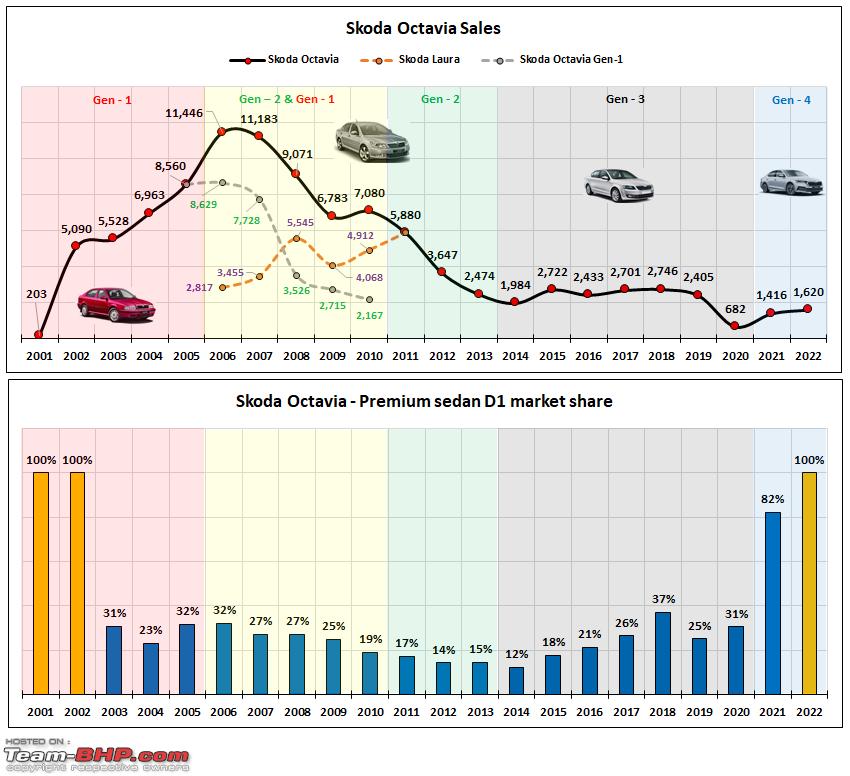
Spanning over four generations and more than two decades of presence, Octavia marks the start and the end of the Premium Sedan D1 segment. Octavia developed a cult following among Indian customers and was regarded as the creamy layer in the premium sedan D1 segment. Octavia has always been known in India for premium interiors, a battle tank-like build, huge interior space, a long equipment list, and a great driver’s car. In its early years, the Octavia offered alloy wheels, which even the Mercedes-Benz C-Class did not have. The L&K variant launched later in 2004 was equipped with more equipment, including a sunroof, a bi-xenon projector headlamp, and leather upholstery. Octavia also demonstrated early on that a diesel engine could be refined and enjoyable. Octavia also introduced Volkswagen AG’s turbo-petrol (TSI) and dual-clutch transmission (DSG) technologies to this segment.
The first generation Of Octavia was quite successful in India, as Skoda continued to introduce new variants. In 2005, Skoda took the decision to bring the second generation of Octavia to India and named it Laura. Renaming was done because Skoda India continued to sell older generations simultaneously, by repositioning. Laura's sales grew slowly, and success wasn't the same as that of the first generation Octavia.
The third generation Octavia was built on Volkswagen's new MQB platform, and its design was inspired from Audi. There was also a steep price hike. Third generation’s sales reached its highest level when the quad-headlamp facelift was launched. Octavia's fourth and last generation came without a sunroof, and its overpriced perception limited its sales number.
Skoda has also introduced a high-performance version of the Octavia known as the vRS. The first vRS was launched in 2004 with a 1.8L TSI petrol engine and 150 PS power output, at ₹ 13.2 lakh. Later in 2018, the vRS version was re-introduced with a 2L TSI petrol engine having 230 PS of power output, as the 1.8 TSI became the staple engine for the regular Octavia. At ₹ 24.6 lakh, the price was appealing. This was followed by the final iteration of vRS with 245 PS power output and front LSD, came in 2020 as a CBU import with a hefty price tag of ₹ 35.99 lakh. Both 2L TSI vRS versions were sold in limited numbers.
Skoda also experimented with a station wagon version of the Octavia in 2005, which wasn’t successful as Skoda was able to sell only 229 units until 2008. Indians rejected the concept of station wagon from the start, introduced by other brands as well from time to time.
Toyota Corolla (2003-2008-2014-2020)

The Corolla remained the best-selling car and maintained its leadership position in the premium sedan D1 segment. It also remained the only car in the segment without a sunroof throughout its three generations. The Corolla has a decent and spacious interior, and a satisfactory feature list. The Corolla was mostly regarded for its typical Toyota qualities of reliability and low maintenance cost. In its third generation, the Corolla skipped conventional design language and adorned little flamboyant looks inspired from Lexus.
The Corolla came with a refined and reliable 1.8L VVT-i engine from beginning to end. In 2010, it was joined by a 1.4L diesel engine with a mere 90 PS power output, quite underwhelming from a competition stand point, but engine was high on fuel efficiency at 21.4 kmpl ARAI certified figure. In 2012, the diesel mix for the Corolla reached an all-time high of 66%, as low power figures did not deter chauffeured customers.
Chevrolet Optra (2003-2012)
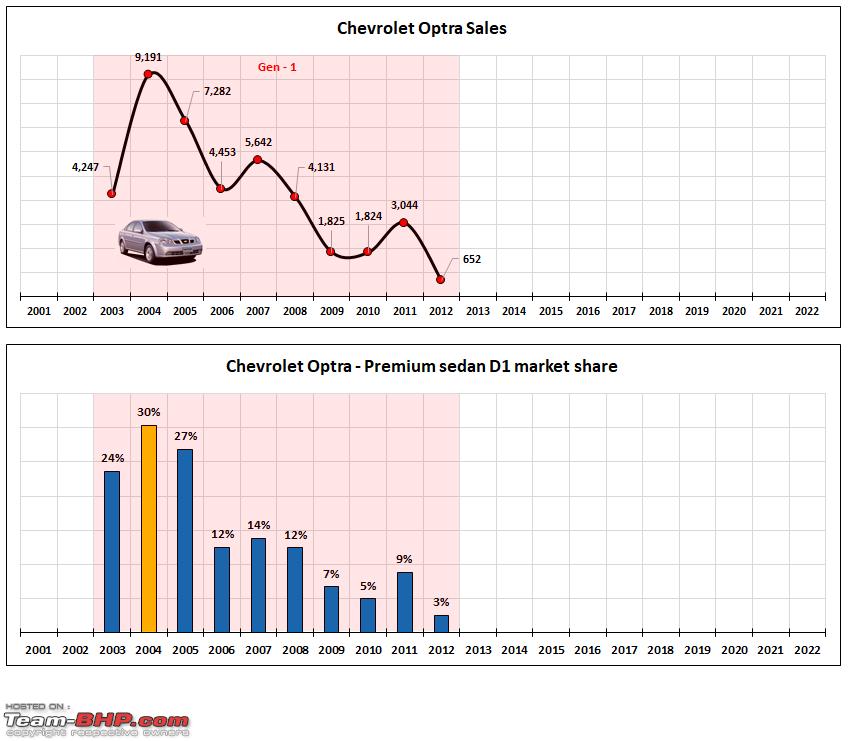
Chevrolet introduced Daewoo Lacetti as a rebadged Optra in the Indian market and positioned it at the lower end of the price spectrum. Though a size smaller in the competition basket, it always remained a value for money offering in the segment. It was introduced with a 1.6L and 1.8L naturally aspirated petrol engine. Later, it was followed by a 2L diesel engine in 2007, in a facelifted avatar with the Magnum suffix.
Hyundai Elantra (2004-2008 & 2012-2016-2021)

Elantra always came with all the bells and whistles, including a powerful CRDi diesel engine, but it never felt too special or desirable in the competition basket.
Second generation Elantra having fluidic design theme immediately caught the attention of buyers, in 2012. In India, the first three years of the second generation Elantra were the best.
The third generation Elantra featured a Jaguar-inspired design, but sales were disappointing. After a radical facelift in 2019, sales were grounded, forcing Hyundai to pull the plug. The Elantra story has a subtle hint about how overall brand image matters in an Indian context.
Honda Civic (2006-2012 & 2019-2021)
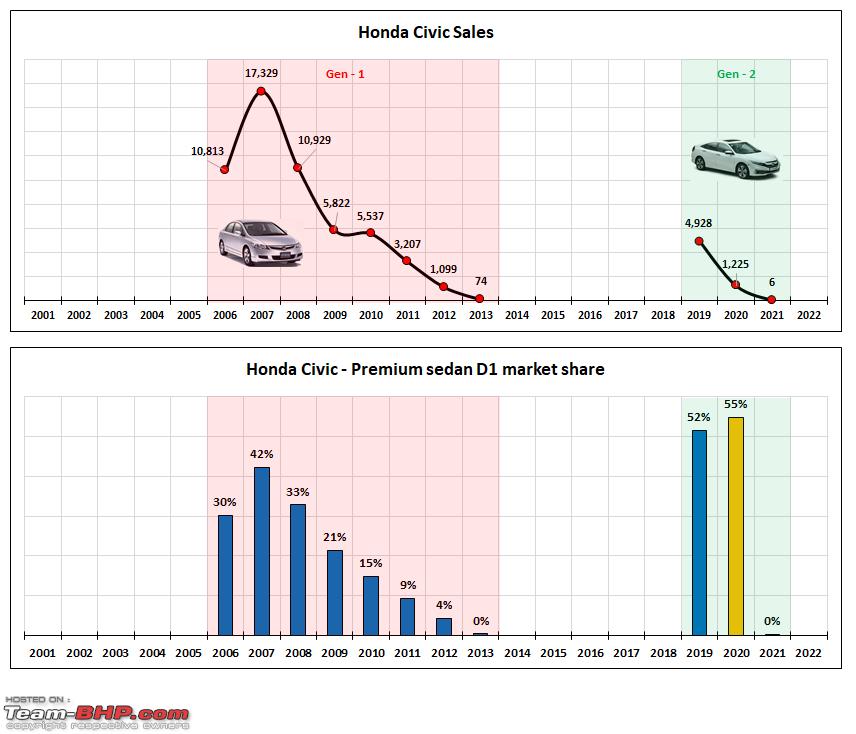
With ingredients like - sports car like silhouette, a twin pod tail lamp inspired from Ferrari, a futuristic aircraft like cockpit, and a spirited 1.8L naturally aspirated petrol engine, the Civic became an instant hit among young buyers. Thus, Civic also achieved its highest ever sales mark of 17,329 units in 2007, which is also the best in the segment. Civic often used to scrapes its belly on Indian roads, due to the low ground clearance, and limited boot space it offers, were major purchase deterrents. The lack of diesel engine and high petrol prices after 2008 made Civics’ life more difficult, forcing Honda to pull the plug in 2012.
In 2019, Honda relaunched the Civic with a similar petrol and new diesel drivetrain. After only three months on the market, Civic's sales have slowed due to mismatched value proposition of drivetrains on offer. Diesel was underpowered, that too without automatic transmission option, and petrol was paired with CVT transmission only, which robbed the driving performance. Rear seat was too low positioned for the Indian market, and the sloping roof line reduced rear headroom, so back seat prospects simply ditched the idea of buying a Civic.
A CKD assembly line was located at Honda’s Greater Noida facility, and while shifting operations to new plant located at Tapukara in Rajasthan, Honda didn’t had a business case to set up a CKD assembly line, because Civic and CRV weren’t selling well due to Honda’s own fault. Finally Civic was discontinued in 2021.
Volkswagen Jetta (2008-2011-2017)

In India, Volkswagen also took a top-down approach, launching premium products to build brand image before going mainstream. The 2008 Jetta was made in India from CKD kits imported from Mexico. There were two engine options, a 1.6L naturally aspirated petrol engine and a 1.9L TDI diesel engine. The design was conservative by Indian standards and didn’t work well in Jetta’s favour.
The second generation Jetta was launched with a 2L TDI diesel engine followed by a 1.4L TSI petrol engine, both in a lower state of power tune with a steep price change. This generation was underpinned by the old PQ35 platform, whereas cousin - Skoda Octavia moved to the MQB platform in 2013. Despite its built-like-a-tank appearance, the conservative German styling, steep price, close front-face resemblance to the Vento, and engines in lower power tuning kept its appeal limited in the competitor basket.
Chevrolet Cruze (2009-2017)

Cruze was launched in India with a 2L diesel engine having 150 PS of power output. The design was sporty and contemporary with a decent feature level, all this has propelled its sales into the fast lane in a market with strong demand for diesel powered vehicles during those times. Positioned above Chevrolet Optra, it retained the #2 spot in the D1 premium sedan segment for three successive years. Being developed for the American market it surely lacked finesse of European counterpart, though.
Continue reading BHPian pqr's thread on the demise of D-segment sedans for more insights and information.
Pages





